Text
Top 8 SEO Tools Every Marketer Should Use

Search Engine Optimization (search engine optimization) is an critical factor of virtual marketing, critical for enhancing on-line visibility and using organic site visitors to websites. To efficiently optimize your on-line presence, leveraging the proper search engine optimization gear is important. These tools not only offer precious insights however additionally streamline the optimization process. Here are 8 pinnacle SEO equipment that each marketer ought to recollect integrating into their toolkit:
Google Analytics:
Google Analytics is a loose but powerful device that offers complete insights into website site visitors, user behavior, and overall performance metrics. Marketers can music key metrics together with website visits, leap quotes, conversion fees, and greater. By reading this records, marketers can make knowledgeable decisions to optimize their website's content material, person experience, and conversion funnels. Additionally, Google Analytics gives treasured keyword facts and traffic resources, aiding in search engine marketing method refinement.
Google Search Console:
Another vital device from Google, Google Search Console (previously called Webmaster Tools) affords precious statistics approximately a website's visibility in Google seek results. Marketers can monitor internet site indexing popularity, become aware of move slowly errors, and optimize content material for higher seek engine scores. The device also offers insights into key-word overall performance, click on-via charges (CTR), and cell usability, permitting marketers to beautify their website's ordinary search engine optimization performance.
SEMrush:
SEMrush is a comprehensive search engine marketing suite that offers a huge variety of features for key-word studies, aggressive analysis, inbound link auditing, and extra. Marketers can conduct in-intensity key-word research to perceive high-price key phrases, track key-word rankings, and examine competition' strategies. The device's area analysis characteristic affords precious insights into competitors' organic search site visitors, pinnacle-acting keywords, and oneway link profiles, allowing marketers to refine their search engine optimization techniques hence.
Moz Pro:
Moz Pro is a popular SEO software program suite that provides more than a few equipment for keyword studies, hyperlink constructing, web site auditing, and rank tracking. Marketers can use Moz's keyword explorer device to become aware of applicable keywords with excessive search volume and coffee competition. The web site audit characteristic facilitates pick out technical search engine optimization troubles, optimize on-web page factors, and improve website overall performance. Moz Pro also offers a one-way link evaluation tool to display back-link profiles, discover spammy hyperlinks, and construct super backlinks for improved search ratings.
Ahrefs:
Ahrefs is a complete search engine marketing toolset recognized for its sturdy back link analysis capabilities. Marketers can use Ahrefs to conduct aggressive analysis, key-word research, and rank monitoring. The tool's Site Explorer characteristic affords certain insights into a internet site's backlink profile, together with referring domains, anchor text distribution, and area authority. Marketers can discover link-building opportunities, reveal competitors' link-constructing techniques, and disavow toxic one way links to improve their internet site's authority and seek rankings.
Screaming Frog SEO Spider:
Screaming Frog search engine marketing Spider is a effective internet site crawling tool that allows marketers pick out technical search engine optimization issues and optimize website shape. The tool crawls websites and analyzes key search engine marketing elements which includes meta tags, headers, URLs, and internal hyperlinks. Marketers can discover broken hyperlinks, replica content material, and missing meta descriptions, allowing them to make important optimizations for improved seek engine visibility. Screaming Frog also offers superior features for XML sitemap era and placement structure evaluation.
Yoast SEO:
Yoast search engine optimization is a famous WordPress plugin that gives a range of functions for on-web page SEO optimization. Marketers can use Yoast SEO to optimize meta titles, meta descriptions, and on-web page content for targeted keywords. The plugin offers actual-time feedback and hints to enhance content material clarity, key-word density, and average search engine optimization overall performance. Yoast SEO additionally offers XML sitemap generation, breadcrumb navigation, and social media integration functions for more desirable website optimization.
Google Keyword Planner:
Google Keyword Planner is a loose tool provided with the aid of Google Ads that offers precious insights into key-word seek extent, competition, and bid estimates. Marketers can use Keyword Planner to pick out relevant keywords for their search engine marketing campaigns, assess keyword overall performance developments, and prioritize keyword focused on based on search volume and opposition ranges. The device also provides keyword tips and associated seek queries, assisting marketers enlarge their keyword focused on method.
In end, these 8 search engine optimization gear provide precious capabilities and insights to assist entrepreneurs optimize their websites for advanced search engine visibility and natural traffic. By leveraging those gear efficiently, marketers can gain valuable insights into their website's overall performance, pick out optimization opportunities, and live in advance of competitors in the ever-evolving panorama of search engine marketing.
Digital Marketing Services, SEO and E-Commerce Solutions in Delhi, India
Author – Farhanul Haque
The article “Top 8 SEO Tools Every Marketer Should Use” is written by the Founder of Digitamizer who has been working in the e-commerce Sector Since 2006 and is also a certified Digital Marketing Professional from IIT, Delhi, India.
0 notes
Text
Alibaba Revolutionizing E-commerce in China and Beyond

How has Alibaba revolutionized e-commerce in China as well as the wholesale market worldwide?
In the world of e-commerce, few organizations have made as considerable an impact as Alibaba Group Holding Limited. Founded in 1999 by means of Jack Ma, AB has grown into an e-commerce large that has now not most effectively converted the way commercial enterprise is completed in China however has also had a profound effect on the worldwide e-commerce panorama. This article explores the rise and evolution of Alibaba, its effect on e-commerce in China, and its enlargement into global markets.
Introduction

The story of Alibaba (AB) is a testimony to the strength of entrepreneurship, innovation, and the capacity to tap into the huge potential of a growing virtual economy. What began as a small online marketplace connecting Chinese producers with global consumers has advanced right into a conglomerate that encompasses e-commerce, cloud computing, digital leisure, and more. AB’s adventure is a case look at how a visionary chief, strategic thinking, and deep information of the market can cause exceptional success.
The Early Days of Alibaba

Alibaba is based in Hangzhou, China, via Jack Ma, a former English teacher with a passion for entrepreneurship. Ma’s vision changed to create a platform that might make it less complicated for small and medium-sized Chinese manufacturers to get the right of entry to worldwide markets. In 1999, he and a group of co-founders released Alibaba.com, a business-to-commercial enterprise (B2B) online marketplace.
The timing changed into fortuitous. China was experiencing a speedy monetary increase, and there was a developing demand for Chinese items internationally. However, many small manufacturers lacked the assets and know-how to reach global shoppers. Alibaba’s platform bridged this hole by means of imparting a virtual marketplace in which these manufacturers could showcase their products to an international target audience.
Alibaba’s Key Milestones
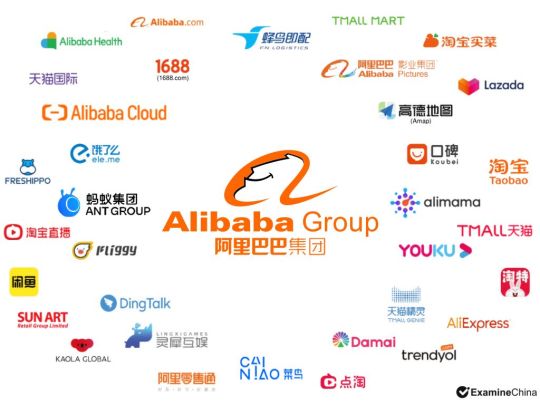
To understand AB’s effect, it is essential to focus on a few key milestones in its history of commerce
Alibaba.Com
The launch of Alibaba.com in 1999 marked the agency’s first foray into e-commerce. It allowed Chinese manufacturers to list their merchandise and hook up with customers from around the world.
Taobao
In 2003, AB introduced Taobao, a consumer-targeted online market that allowed people and small organizations to shop for and sell items. Taobao fast won a reputation and has become a dominant force in China’s e-commerce market.
Alipay
Recognizing the want for a secure online fee machine, Alibaba launched Alipay in 2004. Alipay is now not the most effective facilitated transaction on AB’s systems. However, additionally has become a leading virtual fee company in China.
Tmall
In 2008, AB launched Tmall (previously Taobao Mall), a premium model of Taobao centered on emblem-call merchandise. Tmall attracted established brands and helped fight counterfeiting issues.
Singles’ Day
It grew to become China’s Singles’ Day, a traditional excursion for singles, into the arena’s biggest purchasing event. The November eleventh sale has constantly damaged statistics, with billions of greenbacks in income every 12 months.
Alibaba Cloud
Realizing the capability of cloud computing, AB entered the cloud services marketplace with Alibaba Cloud (Aliyun) in 2009. It has been considered to be a major player within the worldwide cloud industry.
International Expansion
AB improved its presence in China, making an investment in and obtaining companies in diverse international locations, including the acquisition of Lazada in Southeast Asia and investments in the Indian e-commerce organization Paytm.
Impact on E-commerce in China
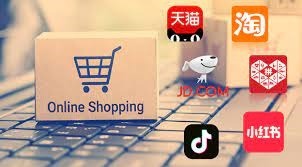
Alibaba’s impact on e-commerce in China has been profound and far-accomplishing
Market Dominance
It’s structures, together with Taobao and Tmall, have dominated China’s e-commerce market, accounting for a considerable share of online retail sales.
Rural E-commerce
AB has played a pivotal role in bringing e-commerce to rural areas of China. Projects like the “Rural Taobao” application, have helped rural companies and farmers get admission to national and global markets.
Digital Payment Revolution-commerce
Alipay, a subsidiary of AB, has revolutionized digital bills in China. It is extensively used not handiest for e-commerce transactions but also for diverse financial services.
Innovation
AB has been at the leading edge of e-commerce innovation, from introducing virtual storefronts to imposing augmented fact (AR) buying experiences.
Small Business Empowerment
AB’s systems have empowered countless small agencies and entrepreneurs, providing them with get admission to to a vast client base and the equipment to develop their brands.
Alibaba’s Global Expansion

While Alibaba’s achievement in China is undeniable, the organization has additionally set its sights on worldwide markets
Investments in Southeast Asia
AB has made strategic investments in e-commerce, logistics, and virtual payment organizations in Southeast Asia, strengthening its presence inside the region.
Partnerships
The business enterprise has entered partnerships with global outlets and brands to facilitate move-border e-commerce and increase its international product services.
Alibaba Cloud
AB Cloud has extended its information centers and services globally, positioning itself as a first-rate participant in the international cloud computing marketplace.
Global Shopping Festivals
AB has introduced Singles’ Day and other purchasing galas to international audiences, creating opportunities for worldwide manufacturers to participate.
E-commerce Platforms
AB has released e-commerce systems catering to global customers, such as AliExpress, allowing Chinese sellers to reach an international customer base.
Challenges and Controversies for Alibaba
Despite its achievement, AB has confronted its share of challenges and controversies
Counterfeit Goods
The sale of counterfeit and low-excellent merchandise on Alibaba’s platforms has been a continual problem, leading to worries approximately customer protection and brand integrity.
Regulatory Scrutiny
The Chinese authorities have accelerated regulatory scrutiny of AB, resulting in fines and regulatory changes aimed at curbing monopolistic conduct.
Geopolitical Tension
Alibaba, like different Chinese tech giants, has faced geopolitical tensions that have complicated its worldwide growth efforts.
Conclusion
Alibaba’s adventure from a small start-as much as a worldwide e-commerce giant is an exquisite testament to the transformative electricity of innovation and entrepreneurship. It has now not only revolutionized e-commerce in China but has additionally made large inroads into worldwide markets. With various atmosphere that includes e-commerce, cloud computing, virtual bills, and more. It continues to form the future of the digital economic system.
As Alibaba faces new challenges, including regulatory scrutiny and extended opposition. Also, its potential to adapt and innovate can be essential to its persevered fulfillment. Nevertheless, the tale of Alibaba remains a concept for marketers and business leaders globally, illustrating what can be executed through vision, willpower, and deep expertise in the evolving digital panorama.
Digital Marketing Services , SEO and E-Commerce Solutions in Delhi, India
Author – Farhanul Haque
This article is written by the Founder of Digitamizer who has been working in the e-Commerce Sector Since 2006 and is also a certified Digital Marketing Professional from IIT, Delhi, India.
0 notes
Text
Amazon’s Ascendancy: From Bookstore to E-Commerce Titan

How was Amazon raised from an Online Bookstore to an E-Commerce Giant?
In the sprawling landscape of e-commerce, one call stands head and shoulders above the rest—Amazon. The tale of Amazon’s meteoric upward thrust from a web bookshop to an international e-commerce behemoth is nothing brief of mythical. At the helm of this brilliant journey is Jeff Bezos, a visionary entrepreneur whose audacious ideas and relentless pursuit of innovation have reshaped the manner we keep, consume media, and even live our lives.
The Humble Beginnings
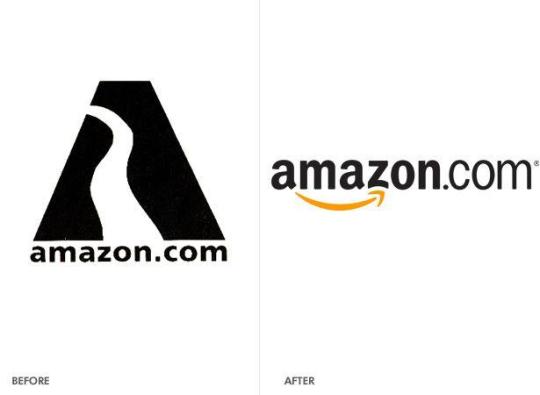
Our story begins in the early 1990s when Jeff Bezos, a former Wall Street hedge fund government, left his cushy task to chase an audacious dream—to create an internet bookstore. With his wife MacKenzie using his facet, Bezos launched into an adventure that could alter the landscape of retail and commerce.
In July 1994, Bezos founded Amazon.Com, to begin with running out of storage in Bellevue, Washington. The desire of the call “Amazon” becomes symbolic, evoking the vastness and variety of the Amazon River. Bezos envisioned a platform that might offer an immense choice of products, comparable to the river’s large environment.
The First Sale
The first ebook offered on Amazon was Douglas Hofstadter’s “Fluid Concepts and Creative Analogies: Computer Models of the Fundamental Mechanisms of Thought.” The transaction happened on April three, 1995, marking the beginning of the world’s biggest online retailer. In that second, Jeff Bezos had no inkling of the global retail massive his vision could sooner or later end up.
The Dotcom Boom and Bust

The mid1990s was a time of rapid increase for the internet, and Amazon became at the leading edge of this revolution. Bezos understood that to prevail, Amazon had to enlarge beyond books. By 1999, Amazon had assorted its product services to include songs, electronics, toys, and more.
The Dotcom Bubble
During the dot-com bubble of the late 1990s, Amazon became using high. Its stock charge soared to unheard-of levels, and the employer was expanding aggressively. However, when the bubble burst in 2000, many ecommerce businesses folded. Amazon, although bruised, controlled to survive. It was all through this era that Amazon commenced to refine its enterprise version and attention to becoming a patroncentric employer.
The Amazon Flywheel Effect

One of the important thing factors in Amazon’s achievement has been its relentless focus on the client experience. Jeff Bezos famously articulated the concept of the “Amazon Flywheel.” The idea is straightforward however powerful: using investing in patron experience, Amazon should attract more clients, which in flip might appeal to celebration dealers to the platform, leading to a broader selection of merchandise and lower costs, in the end riding greater clients. It’s a self-reinforcing loop that has propelled Amazon’s growth.
Customer Obsession
“Customer Obsession” became Amazon’s guiding precept. Bezos insisted on an empty chair being present at meetings—an image representing the purchaser, to remind every person of the final cognizance in their choices.
Expanding Horizons: From Books to Everything

The early 2000s marked a period of rapid growth for Amazon. It began presenting not just products but also offerings, along with Amazon Web Services (AWS), which could later grow to be a major player in cloud computing. The creation of Amazon Prime in 2005, a subscription provider presenting free day delivery and other benefits, in addition, solidified Amazon’s position in clients’ lives.
Acquisitions and Innovations
Amazon did not simply grow organically; it improved via strategic acquisitions. Notable acquisitions protected the acquisition of Zappos (a web shoe retailer) and Audible (an audiobook carrier). It additionally launched progressive products like the Amazon Kindle, revolutionizing the manner human beings examine books.
Fulfillment Centers and Logistics

Behind Amazon’s seamless buying enjoy lies a complex net of logistics and success centers. Bezos identified that green and reliable delivery changed into vital to consumer pride. This led to Amazon’s funding in achievement facilities, distribution networks, and its delivery services.
Prime: A GameChanger

Amazon Prime, with its promise of fast and loose delivery, became a game-changer. It incentivized customers to keep more regularly and established a feeling of loyalty that few other businesses ought to shape.
Amazon’s Marketplace Revolution

In addition to selling its products, Amazon created a platform for third-birthday celebration dealers to reach a global target market. The Amazon Marketplace allowed small companies to thrive on the platform, leveraging Amazon’s good-sized patron base and logistics community.
Seller Focused
Amazon has become supplier-centered, offering tools and offerings to assist companies to succeed. The Fulfillment by using the Amazon (FBA) application, for instance, allowed sellers to save their products in Amazon’s warehouses and leverage its transport and customer support infrastructure.
Beyond Retail: Amazon’s Diverse Ventures

Amazon’s quest for innovation extended properly beyond e-commerce. The corporation ventured into numerous regions, from amusement to synthetic intelligence. Some great ventures consist of:
Amazon Web Services (AWS)
What started as an inner infrastructure provider to help Amazon’s e-commerce operations became a multibillion-greenback enterprise, providing cloud computing answers to organizations worldwide.
Amazon Studios
Amazon entered the arena of content creation with Amazon Studios, producing critically acclaimed authentic collections and films.
Alexa and Echo
Amazon’s voice-activated digital assistant, Alexa, and the Echo clever speakers have ended up family staples, ushering within the era of smart homes.
Groceries and Amazon Fresh
Amazon’s acquisition of Whole Foods and the launch of Amazon Fresh marked its entry into the grocery zone.
Pharmaceuticals and Healthcare
Amazon received PillPack, signaling its interest in disrupting the healthcare and pharmaceutical enterprise.
Space Exploration with Blue Origin
Jeff Bezos’ passion for space caused the creation of Blue Origin, a nonpublic area exploration employer.
Challenges and Controversies
Amazon’s direction to dominance was not without its proportion of controversies. Concerns about employee conditions in Amazon’s success facilities, antitrust scrutiny, and complaints from small corporations selling on the platform have been persistent challenges.
The Antitrust Challenge
Amazon has confronted scrutiny from regulators and lawmakers in a couple of nations over allegations of monopolistic conduct. The company’s marketplace power and impact have raised questions about opposition and equity.
Labor Practices
Reports of grueling working situations in Amazon warehouses have drawn complaints and protests. The employer has replied with the aid of implementing reforms and elevating the minimum salary for its people.
Small Business Concerns
While Amazon has enabled small groups to attain an international market, some have expressed concerns approximately Amazon’s management of their sales and right of entry to to consumer information.
The Pandemic and E-commerce Acceleration

The COVID-19 pandemic expanded the shift to e-commerce, and Amazon observed itself in the middle of this seismic commerce. With physical shops remaining and consumers turning to online purchasing for necessities and amusement, Amazon’s services have become quintessential.
Unprecedented Demand
Amazon faced an unheard-of surge in demand, leading to the hiring of masses of lots of additional people to meet the wishes of customers during the pandemic.
Innovations and Challenges
The pandemic spurred innovations inclusive of contactless transport and greater protection measures in Amazon centers. However, it also uncovered vulnerabilities within the international supply chain.
The Bezos Legacy and the Transition

In February 2021, Jeff Bezos introduced that he could step down as Amazon’s CEO, transitioning to the function of Executive Chairman. Andy Jassy, the former head of AWS, succeeded Bezos as CEO. Bezos’ selection marked an enormous moment in Amazon’s record. As, he endured awareness of his space exploration project, Blue Origin, and philanthropic endeavors.
Impact on Amazon
As they entered a brand new generation with Jassy at the helm, the company faced the mission of retaining its relentless growth even as addressing ongoing concerns associated with employee conditions, antitrust investigations, and environmental sustainability.
Conclusion: The EverEvolving Amazon
The story of Online Giant and Jeff Bezos is certainly one of relentless innovation, audacious imagination, and prescient, and seismic impact on commerce. What started as an online bookshop has advanced right into an international conglomerate that touches nearly every factor of our lives, from how we keep to how we consume enjoyment and generation.
As Amazon navigates its future, it’ll face complicated challenges and scrutiny, but its commitment to client centricity, innovation, and its ambitious vision make certain that it’s going to stay a force to be reckoned with within the global of e-commerce and past
The journey of e-commerce store and Jeff Bezos is a testament to the transformative strength of e-commerce and the possibilities that lie in advance in an increasingly more interconnected international. It serves as a concept for marketers and businesses aiming to make an enduring effect on the virtual landscape.
Digital Marketing Services , SEO and E-Commerce Solutions in Delhi, India
Author – Farhanul Haque
This article is written by the Founder of Digitamizer who has been working in the e-Commerce Sector Since 2006 and is also a certified Digital Marketing Professional from IIT, Delhi, India.
0 notes
Text
E-commerce Marketplaces: The Impact on Small E-commerce Businesses

What is the impact of E-commerce Marketplaces on small e-commerce businesses?
In the ever-evolving panorama of e-commerce, the role of E-commerce Marketplaces cannot be overstated. These digital structures have not best changed how customers save however have additionally had a profound effect on small e-commerce businesses. This article delves into the multifaceted effect of marketplaces on small e-commerce firms, inspecting the benefits, challenges, and techniques vital for thriving on this aggressive atmosphere.
Introduction – E-commerce Marketplaces

The e-commerce industry has experienced a tremendous evolution when you consider its inception in the overdue twentieth century. It has transitioned from rudimentary online shops to a complex and interconnected ecosystem in which E-commerce Marketplaces play a critical role. These marketplaces, exemplified via enterprise giants like Amazon, eBay, and Alibaba, have revolutionized the way clients find out and buy products. This transformation has drastically affected small e-commerce groups, redefining their possibilities and demanding situations.
The Rise of E-commerce Marketplaces

E-commerce Marketplaces have become synonymous with e-commerce, providing purchasers with a comprehensive and handy buying enjoy. Among those, Amazon sticks out as an iconic example of a marketplace’s transformative strength. Originating as a web book shop in 1994, Amazon has grown right into a global e-commerce juggernaut that offers a mind-blowing array of merchandise, from books to electronics to groceries.
The appeal of marketplaces for consumers is clear they provide a one-prevent destination for absolutely any product, often followed by means of speedy shipping alternatives and reliable customer support. This unheard-of comfort has led many customers to prefer E-commerce Marketplaces over traditional brick-and-mortar stores and individual e-commerce websites.
Advantages of Selling on E-commerce Marketplaces for Small Businesses
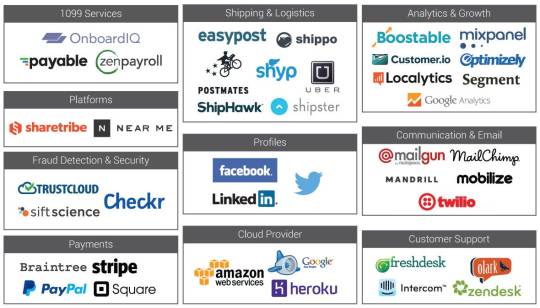
For small e-commerce businesses, promoting on E-commerce Marketplacesnline marketplaces gives several compelling advantages
Instant Access to a Vast Customer Base
Marketplaces boast millions of lively users, granting small agencies on-the-spot exposure to a massive and diverse client base that could be hard to reach independently.
Credibility and Trust
Associating with famous E-Commerce marketplaces imparts credibility and belief to small corporations. Customers are extra inclined to make purchases through mounted structures.
Infrastructure and Resources
E-Commerce marketplaces regularly provide a collection of equipment and sources for organizations, which include price processing, order achievement, or even advertising and marketing offerings. These sources can appreciably lessen the operational burdens for small corporations.
Global Reach
Small companies can tap into global markets with relative ease, as marketplaces handle complexities like worldwide transport and charge processing.
Data and Analytics
E-Commerce marketplaces provide treasured statistics and analytics insights that could assist small organizations in refining their advertising marketing and product techniques. This statistics-pushed method can decorate choice-making and lead to a successful outcome.
Challenges Faced by Using Small E-commerce Businesses on E-Commerce Marketplaces

Despite the benefits, promoting on online marketplaces affords its personal set of challenges for small organizations
Increased Competition
The sheer extent of sellers on marketplaces can cause extreme opposition. Small businesses often find it tough to face out amid this crowded market.
Fee Structures
Marketplaces generally charge fees for listing merchandise and take a percentage of each sale. These prices can consume into earnings margins, necessitating cautious financial planning.
Limited Brand Control
Small organizations may additionally have constrained management over their emblem’s presentation on marketplaces, as they must adhere to the platform’s pointers and format. This could make it tough to distinguish and set up a unique logo identification.
Dependency
Relying completely on a marketplace for income may be unstable, as modifications in marketplace rules, algorithms, or prices can extensively affect a commercial enterprise’s visibility and profitability. Businesses might also emerge as susceptible to the decisions and whims of the market operator.
Customer Relationship Ownership
Marketplaces often keep manipulating purchaser records, proscribing small agencies’ potential to build direct relationships with their clients. This makes it hard to interact in customized advertising and remarketing efforts.
Strategies for Small E-commerce Businesses to Thrive on E-Commerce Marketplaces
Despite the demanding situations posed by way of online marketplaces, many small e-commerce businesses have thrived on those platforms. Here are a few techniques for accomplishing success
Differentiation
Find modern approaches to distinguish your products from the competition. This ought to involve presenting specific capabilities, bundling objects, or presenting remarkable customer service. Stand out by way of supplying fees that competitors cannot mirror without difficulty.
Optimize Product Listings
Invest time and effort in growing compelling product listings. High-exceptional pictures, designated descriptions, and persuasive replicas can enhance visibility and conversion rates.
Pricing Strategies
Carefully manipulate your pricing strategy to stay aggressive whilst preserving wholesome profit margins. Monitor competitors and adapt pricing as important.
Diversify Sales Channels
Do not rely entirely on one marketplace. Consider promoting on multiple platforms to unfold hazards and attain distinct purchaser segments. Each marketplace may additionally have its target market and advantages.
Build Your Brand
While you are in the marketplace, do not forget your brand identity. Create a strong internet site and establish a presence on social media platforms to build logo loyalty and cognizance.
Customer Service Excellence
Offer top-notch customer service to build wonderful evaluations and preserve robust popularity. Excellent customer service can be a big competitive benefit.
Leverage Data
Use data analytics to recognize purchaser conduct, monitor sales trends, and make knowledgeable selections about inventory, pricing, and advertising techniques. Data-driven insights can pressure commercial enterprises to increase.
Marketing Efforts
Invest in marketing both on and stale the marketplace platform to force visitors and income. Utilize advertising and marketing alternatives offered by way of the market and explore different advertising channels like social media and electronic mail advertising.
Explore Fulfillment Services
Consider the use of marketplace success services or partnering with logistics companies to streamline order success and make sure of green transport and shipping processes.
Conclusion
Online marketplaces have undeniably reshaped the e-commerce landscape. For small e-commerce groups, they represent a potent opportunity to reach an international target audience and leverage the infrastructure and customer base of set-up systems. However, the market environment isn’t without its demanding situations, along with extended opposition, charge systems, restricted logo manipulation, dependency, and consumer relationship possession.
The route to achievement for small organizations on marketplaces requires a strategic technique that encompasses differentiation, optimization, and a sturdy consciousness of customer support. By carefully navigating those demanding situations and opportunities, small e-commerce agencies cannot most effectively live to tell the tale however thrive within the age of online marketplaces. While marketplaces have altered the dynamics of the e-commerce enterprise, they have additionally created new avenues for increase and success for corporations of all sizes inclined to evolve and innovate.
Digital Marketing Services , SEO and E-Commerce Solutions in Delhi, India
Author – Farhanul Haque
This article is written by the Founder of Digitamizer who has been working in the e-Commerce Sector Since 2006 and is also a certified Digital Marketing Professional from IIT, Delhi, India.
0 notes
Text
Digital Revolution: How the Internet Changed Communication Forever

The Digital Revolution: How the Internet Forever Transformed Communication
The Internet, digital revolution has surely revolutionized the manner we speak, ushering in a new generation of connectivity and remodeling each issue of our private and expert lives. In this complete essay, we can discover how the Internet has modified conversation for all time. We will delve into its ancient evolution, its impact on interpersonal relationships, enterprise verbal exchange, schooling, politics, and society. We can even observe the demanding situations and possibilities that have emerged because of this transformative technology.
Introduction – Digital Revolution
The Internet – digital revolution, a global community of interconnected computers, has had a profound and lasting effect on conversation since its inception. It has revolutionized the manner we trade records, connect with others, and behave as an enterprise. To understand the volume of this transformation, we need to first explore the ancient evolution of the Internet and its key milestones.
Historical Evolution of the Internet – Digital Revolution

The Internet’s origins can be traced returned to the Sixties when the U.S. Department of Defense initiated ARPANET, a venture aimed at growing a decentralized communication network that might withstand nuclear assaults. ARPANET laid the foundation for packet-switching generation, the idea of contemporary Internet communication.
The Birth of ARPANET (1969)
ARPANET, created by means of the Defense Advanced Research Projects Agency (DARPA), connected 4 U.S. Universities. It brought the idea of packet-switching, allowing statistics to be broken into packets and transmitted across more than one node.
The Emergence of Email (1970s)
Ray Tomlinson’s development of electronic mail in 1971 marked a widespread milestone. Email became one of the earliest forms of digital communication, shaping how people exchanged messages.
TCP/IP Protocol (1983)
The adoption of the Transmission Control Protocol (TCP) and Internet Protocol (IP) standardized facts transmission throughout diverse networks. This protocol is the spine of the Internet’s conversation infrastructure.
The World Wide Web (1990)
Tim Berners-Lee’s introduction of the World Wide Web, a gadget for organizing and linking information, transformed the Internet into a person-pleasant platform. It enabled the creation of websites and net browsers.
The Dot-Com Boom (Late Nineteen Nineties)
The past Nineties noticed the dot-com boom, with the rapid proliferation of Internet-primarily based organizations. This era added e-commerce and online marketplaces to the leading edge.
The Rise of Social Media (2000s)
Platforms like Friendster, MySpace, and Facebook redefined social interaction by connecting people across the globe. Social media has become a dominant mode of communication and record sharing.
The Mobile Internet (2000s)
The advent of smartphones and cellular Internet access prolonged access of the Internet, allowing conversation on the undergo texting, social apps, and mobile surfing.
Web 2.0 and User-Generated Content (Mid-2000s)
The idea of Web 2.0 emphasized user participation and collaboration. Blogs, wikis, and systems like YouTube empower people to create and share content.
The Cloud Computing Revolution (2010s)
Cloud offerings, including Dropbox and Google Drive, made it possible to store and get admission to statistics from anywhere, promoting seamless communication and collaboration.
The Internet of Things (IoT) (2010s)
IoT gadgets, from smart thermostats to wearable health trackers, have grown to be part of our day-by-day lives, permitting new sorts of verbal exchanges between human beings and machines.
Impact on Interpersonal Communication – Digital Revolution

The Internet has essentially reshaped how people engage with one another. Here are some key ways in which it has impacted interpersonal communique:
Global Connectivity
The Internet has transcended geographical limitations, allowing people from unique corners of the world to attach results easily. Long-distance relationships, friendships, and collaborations have end up commonplace.
Instant Messaging – Digital Revolution
Instant messaging services like WhatsApp, Messenger, and Telegram enable actual-time textual content, voice, and video communique, making it easy to live in contact with buddies and their own families.
Social Media – Digital Revolution
Platforms like Facebook, Twitter, and Instagram have redefined how we percentage our lives, thoughts, and studies. They have additionally facilitated the formation of online groups based totally on shared pursuits.
Online Dating – Digital Revolution
Dating apps and websites have transformed the manner human beings meet and form romantic relationships, making it viable to hook up with ability partners based on compatibility and shared values.
Virtual Reality (VR) and Augmented Reality (AR) – Digital Revolution
Emerging technologies like VR and AR are pushing the boundaries of interpersonal conversation with the aid of developing immersive and interactive digital environments.
Online Support Networks – Digital Revolution
The Internet has supplied a platform for individuals dealing with similar demanding situations, which include fitness issues or non-public struggles, to find help and information in online groups and boards.
Challenges – Digital Revolution
While the Internet has added humans closer, it has also added demanding situations like cyberbullying, online harassment, and the depersonalization of communique via screens.
Impact on Business Communication of Internet – Digital Revolution

The Internet has transformed the way businesses communicate internally and externally. It has opened up new possibilities at the same time as providing specific demanding situations:
E-Commerce – Digital Revolution
The rise of online buying has disrupted traditional retail, permitting corporations to reach a global customer base 24/7. E-commerce platforms like Amazon and Alibaba have grown to be enterprise giants.
Remote Work – Digital Revolution
The Internet has enabled far-off paintings on an unparalleled scale, allowing employees to collaborate from distinct locations. Video conferencing, venture control tools, and cloud-primarily-based collaboration have turned out to be crucial.
Email and Digital Marketing – Digital Revolution
Email has grown to be a ubiquitous device for business verbal exchange, whilst virtual advertising strategies inclusive of search engine optimization, social media marketing, and email campaigns have transformed how groups attain and interact with customers.
Customer Support – Digital Revolution
Online chat, chatbots, and customer service portals have enhanced customer support, providing quicker responses and difficult decisions.
Data Analytics – Digital Revolution
The Internet has furnished get right of entry to good-sized quantities of statistics, enabling companies to research customer behavior, preferences, and trends, main to more informed selection-making.
Global Supply Chains – Digital Revolution
Businesses now rely upon the Internet to control complicated worldwide supply chains, optimizing logistics, stock management, and manufacturing tactics.
Challenges – Digital Revolution
Cybersecurity threats, statistics privacy issues, and records overload are some of the demanding situations corporations face in the digital age.
Impact on Education of Internet – Digital Revolution
The Internet has revolutionized schooling, making gaining knowledge more on-hand, interactive, and bendy:
Online Learning
Educational institutions and structures offer a wide range of online publications and degree packages, making training reachable to a global target market. MOOCs (Massive Open Online Courses) have won a reputation.
Digital Resources
The Internet provides a wealth of digital assets, including e-books, research papers, and educational films, which decorate the getting-to-know experience.
Collaborative Learning
Online collaboration gear and platforms allow students and educators to paint together on initiatives, fostering a sense of network and enhancing getting-to-know effects.
Personalized Learning
Adaptive learning algorithms use records to tailor instructional content to character students’ desires, optimizing the getting-to-know system.
Global Education Exchange
Students can connect to peers from around the world, gaining various perspectives and cultural awareness through online forums and collaborative projects.
Challenges
The digital divide, worries approximately the great of online schooling, and issues related to plagiarism and cheating are challenges that educators and college students should navigate.
Impact on Politics and Social Activism of Internet – Digital Revolution
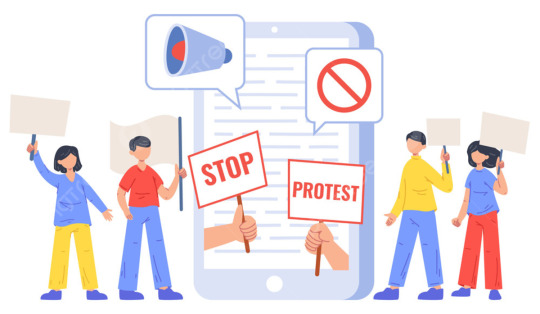
The Internet has performed a substantial function in shaping political discourse, activism, and civic engagement:
Information Dissemination
Social media systems have ended up effective gear for politicians and activists to disseminate facts, mobilize supporters, and shape public opinion.
Online Activism
Movements like #BlackLivesMatter, #MeToo, and the Arab Spring have harnessed the Internet’s reach to elevate attention and impact social and political change.
Political Campaigns
Political candidates use virtual advertising and social media to reach citizens, fundraise, and interact in actual conversations with components.
Citizen Journalism
Ordinary residents can record information and share records through blogs, social media, and impartial information websites, tough conventional media outlets.
Filter Bubbles and Echo Chambers
The Internet’s algorithms can create filter bubbles, wherein people are exposed to facts that enhance their existing ideals, doubtlessly polarizing society.
Cybersecurity and Disinformation
The Internet has become a battleground for cybersecurity threats and disinformation campaigns, posing dangers to the integrity of elections and public discourse.
Impact on Society – Digital Revolution

The Internet has had a long way-attaining implications for society, influencing subculture, enjoyment, and our everyday lives:
Digital Culture
Online groups and structures have given rise to new varieties of virtual lifestyles, from memes and viral tendencies to online gaming and digital subcultures.
Entertainment and Media
Streaming services like Netflix and YouTube have disrupted traditional media consumption, permitting customers to get entry to a huge array of content material on demand.
Information Access
The Internet has democratized get right of entry to to records, permitting people to reality-test, research, and explore diverse viewpoints.
Privacy Concerns
The series and monetization of personal records by means of tech groups have raised worries approximately user privacy and records protection.
Digital Addiction
Excessive Internet use, particularly on social media, has brought about concerns about digital addiction and its impact on intellectual health.
Economic Disruption
The Internet has led to the rise of the gig economic system, in which people paint on a freelance or settlement basis, difficult traditional employment fashions.
Challenges and Opportunities – Digital Revolution

While the Internet has brought numerous blessings, it also gives quite a number of demanding situations and possibilities for people, corporations, and society as an entire:
Digital Divide
Access to the Internet stays unequal, with many people missing dependable connectivity, proscribing their access to education, process opportunities, and information.
Privacy and Security
Cybersecurity threats, statistics breaches, and issues about surveillance raise questions on online privacy and the want for sturdy security measures.
Misinformation and Disinformation
The unfolding of false records and the manipulation of online discourse have the capability to undermine consideration and democracy.
Regulation and Governance
The Internet’s international nature makes it hard to establish consistent policies throughout borders, main to debates about governance and accountability.
Innovation and Entrepreneurship
The Internet continues to foster innovation and entrepreneurship, with startups and tech companies growing new opportunities and disrupting conventional industries.
Ethical Considerations
Ethical dilemmas, which include the accountable use of AI and the effect of automation on jobs, require careful consideration in the digital age.
Conclusion – Digital Revolution
In conclusion, the Internet has profoundly modified communique all the time, reshaping how we interact, work, examine, and engage with the arena around us. Its historic evolution from ARPANET to the global network we realize today has been marked by great improvements and transformative influences. While the Internet has brought approximately several blessings, it also provides demanding situations that require cautious navigation and thoughtful answers.
As we continue to navigate the ever-evolving virtual panorama, it is essential to harness the opportunities it offers even as addressing the ethical, privacy, and safety concerns that come with this powerful tool. The Internet’s effect on verbal exchange is simple, and its future evolution will undoubtedly shape our international in methods we can handiest believe.
Digital Marketing Services , SEO and E-Commerce Solutions in Delhi, India
Author – Farhanul Haque
This article is written by the Founder of Digitamizer who has been working in the e-Commerce Sector Since 2006 and is also a certified Digital Marketing Professional from IIT, Delhi, India.
0 notes
Text
E-commerce in a Post-Pandemic World: Transformation, Trends, Challenges, and Opportunities

How has e-commerce business evolved after the pandemic?
Abstract – E-commerce in a Post Pandemic World
The COVID-19 pandemic caused a seismic shift in the e-commerce panorama. E-commerce in a Post Pandemic World, as the arena actions in the direction of a post-pandemic era, e-commerce has turned out to be a critical part of our lives. This comprehensive essay explores the evolution of e-commerce in an up-pandemic world, analyzing its transformation, rising tendencies, challenges, and possibilities for businesses and clients alike.
Introduction

E-commerce in a Post Pandemic World – Impact
The COVID-19 pandemic, a remarkable international disaster, has profoundly reshaped the world we live in. It affects virtually everything in our lives, including how we keep. Lockdowns, social distancing measures, and health concerns triggered a dramatic shift in client behavior. People began to e-commerce structures for their shopping wishes, accelerating a trend that become already in movement.
Prior to the pandemic, e-commerce turned into a growing force, steadily taking a market proportion from conventional brick-and-mortar retail. However, the pandemic acted as a catalyst, propelling e-commerce into the forefront of global commerce. In 2020, e-commerce sales reached $four.28 trillion, a 27.6% increase from the previous year, according to eMarketer.
E-commerce in a Post Pandemic World – Continuous Relevance
As the arena progressively recovers from the pandemic, e-commerce remains a dominant pressure in the retail landscape. The comfort, safety, and flexibility it offers keep attracting consumers. Furthermore, corporations have diagnosed the significance of a robust online presence and are making an investment closely in their digital techniques.
This essay explores the transformation of e-commerce on this publish-pandemic international, studying the way it has advanced to meet converting consumer needs and the challenges and possibilities it affords to companies and clients alike.
Accelerated Digital Adoption – E-commerce in a Post Pandemic World

The pandemic pressured an extraordinary acceleration in virtual adoption throughout industries. e-commerce, as a digital-first platform, turned into especially well-placed to benefit from this shift.
Online Shopping Became the Norm: With bodily shops closed or constrained, clients turned to online searching for ordinary necessities, luxurious items, and the whole thing in between. This shift was not restrained to tech-savvy millennials; older generations, who had been previously hesitant about online shopping, also embraced it.
Digital Payments and Contactless Transactions: Concerns approximately managing coins and physical cards brought about a surge in digital payment methods. Mobile wallets, contactless bills, and online payment structures saw accelerated usage.
Remote Work and E-commerce: The upward push of faraway work allowed people greater flexibility of their schedules, which, in turn, encouraged their purchasing behavior. Lunch breaks have become online purchasing home windows, leading to the idea of “lunchtime trade.”
Changing Consumer Behavior – E-commerce in a Post Pandemic World

The pandemic brought about changes in consumer behavior that are likely to persist, shaping the e-commerce panorama for years yet to come.
Safety and Convenience: Safety concerns will keep pressuring purchasers toward e-commerce. The comfort of doorstep transport and curbside pickup is difficult to conquer.
Omnichannel Expectations: Consumers now assume an unbroken reveal in throughout online and offline channels. Businesses need to integrate their virtual and physical presence to meet those expectations.
Brand Loyalty and Trust: Consumers became greater discerning during the pandemic. Building agreements with and providing superior customer support are essential for keeping and attracting clients.
Reshaping Business Models – E-commerce in a Post Pandemic World

E-commerce is not just an income channel; it’s a manner of doing commercial enterprise. The pandemic compelled companies to reconsider and adapt their business models.
Direct-to-Consumer (DTC) Models: Brands more and more followed DTC models, bypassing traditional retail channels to promote directly to purchasers. This allowed for better control over the purchaser’s reveal and data.
Subscription Services: Subscription e-commerce models, presenting everyday delivery of merchandise, gained popularity. From meal kits to splendor products, subscriptions presented convenience and a consistent revenue move.
Marketplace Dominance: e-commerce marketplaces like Amazon, Alibaba, and Walmart Marketplace noticed explosive increases. Small and medium-sized organizations flocked to these structures to attain a worldwide target audience.
In precis, the publish-pandemic e-commerce international is characterized by expanded virtual adoption, lasting modifications in purchaser conduct, and the reshaping of conventional enterprise models. E-commerce has firmly set up itself as an imperative pillar of the worldwide financial system.
Emerging Trends – E-commerce in a Post Pandemic World

As the e-commerce landscape evolves, numerous key trends have emerged, shaping the way agencies function and purchasers save.
Omnichannel Retailing – E-commerce in a Post Pandemic World
Omnichannel retailing has gained prominence as purchasers are trying to find a seamless purchasing revel that integrates both online and offline channels.
Online-and-Mortar Stores: Traditional retailers are improving their online presence, permitting clients to save online and select up or go-back objects in physical shops. This integration bridges the distance between online and offline shopping.
Personalized Shopping Journeys: Data-pushed insights allow companies to provide customized tips and offers to customers across numerous touchpoints, enhancing the general buying revel in.
Augmented Reality (AR) and Virtual Reality (VR)- E-commerce in a Post Pandemic World
AR and VR technology are revolutionizing the way clients interact with merchandise online.
Immersive Shopping Experiences: AR and VR allow customers to virtually attempt on garb, visualize fixtures in their homes, or discover products in 3-D. This immersive experience reduces the uncertainty related to online shopping.
Enhanced Product Visualization: AR-powered product visualization equipment permits clients to peer merchandise in their actual surroundings before creating a buy. This characteristic is mainly precious for fixtures and home decor.
Social Commerce – E-commerce in a Post Pandemic World
Social media platforms are more and more turning into purchasing destinations of their very own right.
Integration of Social Platforms: E-commerce systems are integrating with popular social media networks, allowing users to keep without delay within apps like Instagram and Facebook. Social influencers play an important function in promoting merchandise.
Live Streaming Shopping: Live streaming of product demonstrations and promotions is gaining traction. Real-time interaction with dealers and fellow customers complements the purchasing experience.
Sustainable E-commerce
Consumers are setting a developing emphasis on sustainability and ethical shopping.
Eco-pleasant Practices: Consumers are deciding on eco-friendly and sustainable products. e-commerce businesses are responding by offering green options and adopting sustainable practices in their operations.
Transparency and Ethical Sourcing: Transparency concerning the origins and moral practices of products is becoming a key selling factor. Consumers demand information approximately the environmental and moral impact of their purchases.
Personalization and AI-pushed Experiences
Artificial intelligence and system mastering are powering fairly personalized purchasing studies.
Data-Driven Personalization: E-commerce structures use AI to investigate customer records and provide personalized product tips. This enhances client engagement and increases conversions.
Chatbots and Virtual Assistants: AI-powered chatbots and digital assistants provide actual-time customer service and assist with the shopping procedure. They can solve questions, handle transactions, and enhance the general consumer experience.
These emerging tendencies are shaping the e-commerce landscape and influencing how agencies and purchasers engage inside the virtual market. To stay competitive, e-commerce organizations need to adapt and leverage these traits to meet evolving consumer expectations.
Challenges within the Post-Pandemic e-commerce Landscape

While the opportunities in put up-pandemic e-commerce are ample, companies have to also navigate a range of challenges to succeed in this evolving panorama.
Cybersecurity Threats – E-commerce in a Post Pandemic World
Increased Cyberattacks: With the surge in online transactions, cybercriminals see e-commerce systems as beneficial goals. Data breaches, ransomware assaults, and phishing tries are at the upward push.
Data Privacy Concerns: Stringent data privacy rules, such as GDPR and CCPA, require agencies to protect purchaser facts. Non-compliance can bring about giant fines and reputational harm.
Supply Chain Disruptions – E-commerce in a Post Pandemic World
Global Supply Chain Challenges: E-commerce companies are at risk of disruptions within the international supply chain, which include transport delays, production bottlenecks, and shortages of essential items.
Inventory Management: Balancing stock degrees to satisfy the fluctuating call is a complex venture. Overstocking can cause monetary losses while understocking can result in missed sales possibilities.
Regulatory Hurdles – E-commerce in a Post Pandemic World
Evolving Regulations: Navigating the complicated web of e-commerce guidelines, which range with the aid of area and product category, is tough. Compliance with tax, customs, and client protection laws is vital.
Consumer Rights and Dispute Resolution: Handling customer disputes and ensuring honest practices in virtual surroundings require robust dispute decision mechanisms and robust customer support.
Competition and Market Saturation – E-commerce in a Post Pandemic World
Intense Competition: The e-commerce marketplace is highly aggressive, with new entrants constantly rising. Established gamers have to usually innovate to keep the marketplace percentage.
Market Saturation: In some markets, e-commerce is achieving saturation stages, making it difficult to discover new increase opportunities. Businesses need to explore niche markets and don’t forget worldwide expansion.
Customer Trust and Data Privacy
Data Breaches and Trust Issues: High-profile records breaches erode patron acceptance as true. Maintaining a steady and transparent online environment is critical to preserving clients.
Balancing Personalization and Privacy: Striking the right balance between personalization and respecting patron privateness is a steady project. Businesses should gather and use customer information responsibly.
These demanding situations underscore the need for e-commerce corporations to prioritize the protection, compliance, and resilience of their operations. Navigating those hurdles efficiently can differentiate a business in a crowded marketplace.
E-commerce in a Post Pandemic World – Opportunities
While challenges exist, the post-pandemic e-commerce panorama additionally gives numerous opportunities for companies to thrive and innovate.
Global Expansion – E-commerce in a Post Pandemic World
International Markets: E-commerce permits agencies to extend past their domestic markets and tap into a global patron base. Cross-border e-commerce is a vast boom possibility.
Localization: Adapting to the cultural and linguistic possibilities of goal markets can cause expanded sales. Localized websites, content material, and customer service are important.
Micro-Moments and Mobile Commerce – E-commerce in a Post Pandemic World
Mobile Shopping: As cellular devices end up the primary gateway to the net, organizations must optimize their websites and apps for mobile commerce. Micro-moments, in which consumers make brief purchase choices on mobile gadgets, are on the rise.
Mobile Payment Solutions: Offering seamless and secure mobile price options, inclusive of virtual wallets and cell banking apps, can enhance cellular shopping revel.
Niche Markets and Product Innovation – E-commerce in a Post Pandemic World
Niche E-commerce: Identifying and catering to niche markets with unique products or services may be a profitable strategy. Specialized e-commerce shops can entice passionate and loyal purchaser bases.
Product Innovation: Continuously innovating and launching new products or services can assist companies to stand out in competitive markets. Crowdsourcing thoughts from clients can drive innovation.
Partnerships and Collaborations – E-commerce in a Post Pandemic World
Cross-promotions: Collaborating with complementary businesses for cross-promotions can increase the client base. For instance, an apparel logo might partner with a shoe retailer for joint advertising campaigns.
Marketplace Integration: Selling merchandise on set-up e-commerce marketplaces can reveal a commercial enterprise to a broader audience. Marketplace partnerships are especially beneficial for small businesses.
Data-Driven Decision-Making – E-commerce in a Post Pandemic World
Analytics and Insights: Leveraging facts analytics gear can offer treasured insights into customer behavior, allowing businesses to make knowledgeable decisions approximately advertising, product services, and stock control.
Predictive Analytics: Predictive analytics can assist in forecasting trends and demand, permitting businesses to optimize their operations and inventory.
These possibilities show off the widespread ability of e-commerce inside the submit-pandemic international. Businesses that can be agile, progressive, and purchaser-focused can capitalize on those tendencies and thrive on this dynamic panorama.
Conclusion – E-commerce in a Post Pandemic World
E-commerce has emerged from the crucible of the COVID-19 pandemic as a resilient and transformative pressure in international trade. The improved digital adoption, changing customer behavior, and reshaping of commercial enterprise models have firmly hooked up e-commerce as a dominant player in the post-pandemic international.
To achieve this evolving landscape, corporations need to adapt to emerging trends, navigate challenges with resilience, and seize the plentiful opportunities presented with the aid of worldwide growth, niche markets, and information-pushed selection-making. Maintaining agreements with, safety, and consumer-centricity remains paramount.
As we look to destiny, e-commerce will continue to evolve, pushed by using technology, customer expectancies, and marketplace dynamics. The pandemic might also be a catalyst, but the e-commerce journey is far from over. It is a journey of innovation, variation, and transformation, and those who embark on it with imagination prescient, and agility will form the e-commerce panorama of tomorrow.
Digital Marketing Services , SEO and E-Commerce Solutions in Delhi, India
Author – Farhanul Haque
This article is written by the Founder of Digitamizer who has been working in the e-Commerce Sector Since 2006 and is also a certified Digital Marketing Professional from IIT, Delhi, India.
0 notes
Text
Retail Revolution: E-Commerce Unleashing the Power of the Internet

#How retail market changed after the Internet revolution?#Introduction#The emergence of the net has introduced a profound transformation in several factors of our lives#and perhaps one of the most massive adjustments has taken place in the realm of retail. Electronic trade#commonly called e-commerce#has emerged as a recreation changer inside the retail industry#redefining how customers stores#and corporations perform. This whole article delves into the evolution of e-commerce#its multifaceted impacts on traditional retail#the key drivers of its growth#the disturbing situations it faces#and its promising future prospects.#Evolution of E-Commerce#Retail Business#The Early Beginnings of E-commerce#The concept of digital commerce#or e-commerce#had its humble beginnings long before the internet became a ubiquitous part of our lives. The roots of e-commerce may be traced back to the#whilst the world turned into introduced to a groundbreaking generation referred to as Electronic Data Interchange (EDI). This technological#1. Electronic Data Interchange (EDI):#In the 1960s and Nineteen Seventies#corporations were heavily reliant on paper-primarily based systems for carrying out transactions#handling stock#and changing commercial enterprise documents. This manual and paper-intensive manner was no longer only time-eating but also susceptible to#EDI was developed as a strategy for these demanding situations. It allowed businesses to alternate dependent records electronically in a st#consisting of purchase orders and invoices#groups should transmit these statistics digitally among pc systems. This innovation drastically decreased office work#minimized errors#and streamlined diverse enterprise techniques.#2. Early Adopters:
0 notes
Text
The Social Media Revolution: From MySpace to TikTok

What is the history of Social Media?
From Myspace to TikTok and Instagram Reels
Introduction
The evolution of social media platforms has been anything short of progressive, transforming the way we talk, connect, and eat content material within the digital age. From the early days of MySpace to the contemporary dominance of TikTok, this journey reflects now not best technological improvements but also shifts in societal conduct and cultural preferences.
In the early 2000s, MySpace emerged as a trailblazer, imparting users a space to personalize profiles, hook up with pals, and percentage songs and photographs. Its popularity paved the way for next platforms like Facebook, Twitter, and LinkedIn, every supplying particular functions and catering to different components of social interaction.
As the digital panorama endured to conform, so did the platforms. The upward push of Instagram brought a visible-centric technique, fostering a culture of curated feeds and influencer marketing. Meanwhile, Snapchat revolutionized verbal exchange with ephemeral messaging and Stories, fascinating younger audiences.
However, possibly no platform has captured the zeitgeist pretty much like TikTok. Launched in 2016, TikTok quickly skyrocketed to worldwide prominence with its quick-shape video format, fostering creativity, amusement, and virality on an extraordinary scale.
The social media revolution has not handiest reshaped how we communicate however has also influenced industries starting from advertising and amusement to politics and activism. In this exploration, we’re going to journey through the evolution of social media, from its humble beginnings on MySpace to the cultural phenomenon of TikTok, highlighting the transformative effect it has had on society at large.
I. The Birth of MySpace (2003)
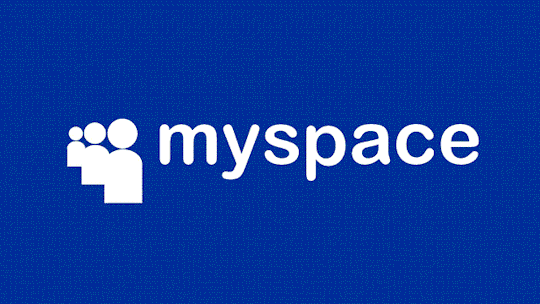
The tale of the social media revolution starts with MySpace, which was released in 2003. MySpace allowed users to create profiles, connect with buddies, and customize their pages with music, images, and private records. It speedy won popularity, mainly among teenagers and teens.
MySpace’s success can be attributed to its simplicity and personalization alternatives. Users ought to express themselves through their profile layouts, the desire for the tune, and the infamous “Top eight” buddies listing, which serves as a digital representation of their social hierarchy. This modern technique of online identity set the stage for the social media revolution to come.
II. New Social Media Connector – Orkut (2004)

Orkut was a pioneering social networking platform created by Google engineer Orkut Büyükkökten, and launched in 2004. It gained significant popularity, especially in countries like Brazil and India, where it became a dominant social media platform for a time. Orkut allowed users to create profiles, connect with friends, and share updates, photos, and videos.
One of its unique features was the “Orkut testimonials” section, where friends could leave public comments on each other’s profiles. While Orkut was known for fostering online communities and connecting people, it also faced criticism for privacy issues and the spread of spam.
Despite its initial success, Orkut eventually declined in the face of competition from platforms like Facebook and Twitter. Google decided to shut down Orkut in 2014, marking the end of an era in the history of social media. While Orkut may no longer exist, its legacy as one of the early social networking giants is remembered by those who were part of its vibrant online communities.
III. The Rise of Facebook (2004)

In 2004, Mark Zuckerberg, a Harvard pupil, added a platform that could eventually overshadow MySpace. Facebook, to start with restrained to Harvard students, multiplied swiftly to different universities and finally became on hand to every person with a legitimate email deal. Facebook’s attraction lay in its smooth layout, consumer-pleasant interface, and focus on actual-international connections.
Facebook is now not just about connecting with pals; it changed into approximately connecting with people you already knew in actual life. This emphasis on true relationships set Facebook apart from MySpace’s greater open and customizable technique. Over time, Facebook introduced functions just like the News Feed and the Like button, which revolutionized content material distribution and engagement on the platform.
IV. X Formerly the Twitter Revolution (2006)

While Facebook turned into gaining traction, any other platform is quietly making waves inside the social media landscape. Twitter, released in 2006, delivered the concept of microblogging, allowing users to proportion quick, a hundred and forty-man or woman messages with the arena. Twitter’s simplicity and real-time nature made it a completely unique platform for sharing news, minds, and opinions.
Twitter played a pivotal position in several historical activities, such as the Arab Spring and the 2008 U.S. Presidential election. It showcased the electricity of social media in shaping public discourse and mobilizing actions. The hashtag, in the beginning, a Twitter innovation, became a popular image of online conversations and activism.
V- The Visual Revolution: Instagram (2010) and Snapchat (2011)

As social media persevered to evolve, the focus shifted from text-primarily based conversation to visual content material. Instagram, launched in 2010, allowed customers to percentage images and brief videos decorated with inventive filters. Its emphasis on aesthetics and storytelling made it a favorite amongst millennials and innovative people.

Snapchat, introduced in 2011, disrupted the social media landscape with its ephemeral messaging layout. Users could ship self-destructing photos and movies, emphasizing privacy and spontaneity. Snapchat’s Stories feature additionally pioneered the idea of temporary, narrative content that would later be followed with the aid of different platforms.
VI- The Age of Video: YouTube (2005) and Vine (2013)

Video content material emerged as a dominant pressure within the social media revolution. YouTube, based in 2005, provided a platform for all and sundry to add and proportion videos, giving rise to a new generation of content material creators and influencers. It played a large function in the democratization of media.

Vine, launched in 2013, introduced the world to short, looping videos. Its six-second layout endorsed creativity and spawned a community of Vine stars. While Vine ultimately shut down, its impact at the social media panorama changed into simple, paving the manner for the quick-shape video content that might later become synonymous with TikTok.
VII. The Decline of MySpace and the Fragmentation of Social Media
As Facebook, Twitter, Instagram, and different systems received popularity. MySpace started to say no. Its open and customizable format had become cluttered and much less attractive to users searching for more streamlined stories. The upward thrust of mobile technology additionally played a position, as MySpace struggled to conform to the cell-first era.
The social media landscape has become increasingly fragmented, with area of interest systems catering to precise hobbies and demographics. LinkedIn emerged as a professional networking platform, Pinterest focused on visible discovery, and Reddit became the hub for niche groups and discussions. This fragmentation allowed users to find platforms that resonated with their person alternatives.
VIII. The TikTok Phenomenon (2016)

In 2016, a Chinese app known as Douyin was launched, later rebranded as TikTok for global audiences. TikTok’s modern layout focused round quick-shape video content material, usually ranging from 15 to 60 seconds. It endorsed users to create and proportion enticing, frequently funny movies set to track or sound bites.
TikTok’s success may be attributed to its algorithm, which quickly learns user preferences and serves them a tailor-made feed of content. This technique made it easy for customers to find new creators and trends, contributing to the speedy growth of TikTok’s personal base.
TikTok’s influence extended past amusement because it became a platform for activism, training, and cultural expression. It also challenged conventional notions of fame and superstars. Regular individuals ought to end up in single-day sensations on the platform.
What is the impact of social media on society?
IX. The Impact of Social Media on Society
The social media revolution has had a profound impact on society, way of life, and personal behavior. It has changed the manner we communicate, eat information, and build relationships. Some of the important thing societal effects include:
Digital Identity: Social media has given an upward push to the idea of a virtual identity, where people curate their online personas. This has implications for privacy, vanity, and authenticity.
Filter Bubbles and Echo Chambers: Algorithms that customize content can create filter-out bubbles, where people are exposed handiest to facts that align with their current beliefs. This can make a contribution to polarization and the spread of misinformation.
Mental Health: Social media use has been connected to mental health problems, together with anxiety, despair, and cyberbullying. The steady assessment and validation for conduct can take a toll on a user’s well-being.
Activism and Awareness: Social media has empowered moves and raised cognizance about social justice issues. Hashtags like #BlackLivesMatter and #MeToo have sparked global conversations and led to real global exchange.
Political Influence: Social media has emerged as an effective tool for political campaigns, allowing candidates to attain and mobilize the electorate. It has also raised issues about election interference and the spread of disinformation.
Conclusion
The social media revolution, from MySpace to TikTok, has reshaped the manner we connect, speak, and express ourselves. Each platform added unique features and stories, reflecting the evolving needs and choices of users. While social media has added many advantageous changes. It has additionally raised significant challenges, from privacy worries to the unfolding of incorrect information.
As we continue to navigate this ever-converting landscape, it is essential to seriously observe the impact of social media on our lives and society. The social media revolution is an ongoing adventure, and its destiny evolution will form the manner we engage with technology, each other, and the world around us.
Digital Marketing Services, SEO and E-Commerce Solutions in Delhi, India
Author – Farhanul Haque
This article is written by the Founder of Digitamizer who has been working in the e-Commerce Sector Since 2006 and is also a certified Digital Marketing Professional from IIT, Delhi, India.
0 notes
Text
The Social Media Revolution: From MySpace to TikTok

What is the history of Social Media?
From Myspace to TikTok and Instagram Reels
Introduction
The evolution of social media platforms has been anything short of progressive, transforming the way we talk, connect, and eat content material within the digital age. From the early days of MySpace to the contemporary dominance of TikTok, this journey reflects now not best technological improvements but also shifts in societal conduct and cultural preferences.
In the early 2000s, MySpace emerged as a trailblazer, imparting users a space to personalize profiles, hook up with pals, and percentage songs and photographs. Its popularity paved the way for next platforms like Facebook, Twitter, and LinkedIn, every supplying particular functions and catering to different components of social interaction.
As the digital panorama endured to conform, so did the platforms. The upward push of Instagram brought a visible-centric technique, fostering a culture of curated feeds and influencer marketing. Meanwhile, Snapchat revolutionized verbal exchange with ephemeral messaging and Stories, fascinating younger audiences.
However, possibly no platform has captured the zeitgeist pretty much like TikTok. Launched in 2016, TikTok quickly skyrocketed to worldwide prominence with its quick-shape video format, fostering creativity, amusement, and virality on an extraordinary scale.
The social media revolution has not handiest reshaped how we communicate however has also influenced industries starting from advertising and amusement to politics and activism. In this exploration, we’re going to journey through the evolution of social media, from its humble beginnings on MySpace to the cultural phenomenon of TikTok, highlighting the transformative effect it has had on society at large.
I. The Birth of MySpace (2003)
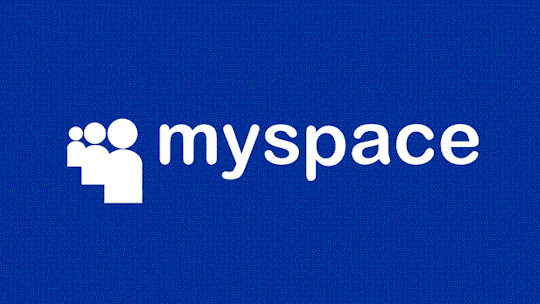
The tale of the social media revolution starts with MySpace, which was released in 2003. MySpace allowed users to create profiles, connect with buddies, and customize their pages with music, images, and private records. It speedy won popularity, mainly among teenagers and teens.
MySpace’s success can be attributed to its simplicity and personalization alternatives. Users ought to express themselves through their profile layouts, the desire for the tune, and the infamous “Top eight” buddies listing, which serves as a digital representation of their social hierarchy. This modern technique of online identity set the stage for the social media revolution to come.
II. New Social Media Connector – Orkut (2004)

Orkut was a pioneering social networking platform created by Google engineer Orkut Büyükkökten, and launched in 2004. It gained significant popularity, especially in countries like Brazil and India, where it became a dominant social media platform for a time. Orkut allowed users to create profiles, connect with friends, and share updates, photos, and videos.
One of its unique features was the “Orkut testimonials” section, where friends could leave public comments on each other’s profiles. While Orkut was known for fostering online communities and connecting people, it also faced criticism for privacy issues and the spread of spam.
Despite its initial success, Orkut eventually declined in the face of competition from platforms like Facebook and Twitter. Google decided to shut down Orkut in 2014, marking the end of an era in the history of social media. While Orkut may no longer exist, its legacy as one of the early social networking giants is remembered by those who were part of its vibrant online communities.
III. The Rise of Facebook (2004)

In 2004, Mark Zuckerberg, a Harvard pupil, added a platform that could eventually overshadow MySpace. Facebook, to start with restrained to Harvard students, multiplied swiftly to different universities and finally became on hand to every person with a legitimate email deal. Facebook’s attraction lay in its smooth layout, consumer-pleasant interface, and focus on actual-international connections.
Facebook is now not just about connecting with pals; it changed into approximately connecting with people you already knew in actual life. This emphasis on true relationships set Facebook apart from MySpace’s greater open and customizable technique. Over time, Facebook introduced functions just like the News Feed and the Like button, which revolutionized content material distribution and engagement on the platform.
IV. X Formerly the Twitter Revolution (2006)

While Facebook turned into gaining traction, any other platform is quietly making waves inside the social media landscape. Twitter, released in 2006, delivered the concept of microblogging, allowing users to proportion quick, a hundred and forty-man or woman messages with the arena. Twitter’s simplicity and real-time nature made it a completely unique platform for sharing news, minds, and opinions.
Twitter played a pivotal position in several historical activities, such as the Arab Spring and the 2008 U.S. Presidential election. It showcased the electricity of social media in shaping public discourse and mobilizing actions. The hashtag, in the beginning, a Twitter innovation, became a popular image of online conversations and activism.
V- The Visual Revolution: Instagram (2010) and Snapchat (2011)

As social media persevered to evolve, the focus shifted from text-primarily based conversation to visual content material. Instagram, launched in 2010, allowed customers to percentage images and brief videos decorated with inventive filters. Its emphasis on aesthetics and storytelling made it a favorite amongst millennials and innovative people.

Snapchat, introduced in 2011, disrupted the social media landscape with its ephemeral messaging layout. Users could ship self-destructing photos and movies, emphasizing privacy and spontaneity. Snapchat’s Stories feature additionally pioneered the idea of temporary, narrative content that would later be followed with the aid of different platforms.
VI- The Age of Video: YouTube (2005) and Vine (2013)

Video content material emerged as a dominant pressure within the social media revolution. YouTube, based in 2005, provided a platform for all and sundry to add and proportion videos, giving rise to a new generation of content material creators and influencers. It played a large function in the democratization of media.

Vine, launched in 2013, introduced the world to short, looping videos. Its six-second layout endorsed creativity and spawned a community of Vine stars. While Vine ultimately shut down, its impact at the social media panorama changed into simple, paving the manner for the quick-shape video content that might later become synonymous with TikTok.
VII. The Decline of MySpace and the Fragmentation of Social Media
As Facebook, Twitter, Instagram, and different systems received popularity. MySpace started to say no. Its open and customizable format had become cluttered and much less attractive to users searching for more streamlined stories. The upward thrust of mobile technology additionally played a position, as MySpace struggled to conform to the cell-first era.
The social media landscape has become increasingly fragmented, with area of interest systems catering to precise hobbies and demographics. LinkedIn emerged as a professional networking platform, Pinterest focused on visible discovery, and Reddit became the hub for niche groups and discussions. This fragmentation allowed users to find platforms that resonated with their person alternatives.
VIII. The TikTok Phenomenon (2016)

In 2016, a Chinese app known as Douyin was launched, later rebranded as TikTok for global audiences. TikTok’s modern layout focused round quick-shape video content material, usually ranging from 15 to 60 seconds. It endorsed users to create and proportion enticing, frequently funny movies set to track or sound bites.
TikTok’s success may be attributed to its algorithm, which quickly learns user preferences and serves them a tailor-made feed of content. This technique made it easy for customers to find new creators and trends, contributing to the speedy growth of TikTok’s personal base.
TikTok’s influence extended past amusement because it became a platform for activism, training, and cultural expression. It also challenged conventional notions of fame and superstars. Regular individuals ought to end up in single-day sensations on the platform.
What is the impact of social media on society?
IX. The Impact of Social Media on Society
The social media revolution has had a profound impact on society, way of life, and personal behavior. It has changed the manner we communicate, eat information, and build relationships. Some of the important thing societal effects include:
Digital Identity: Social media has given an upward push to the idea of a virtual identity, where people curate their online personas. This has implications for privacy, vanity, and authenticity.
Filter Bubbles and Echo Chambers: Algorithms that customize content can create filter-out bubbles, where people are exposed handiest to facts that align with their current beliefs. This can make a contribution to polarization and the spread of misinformation.
Mental Health: Social media use has been connected to mental health problems, together with anxiety, despair, and cyberbullying. The steady assessment and validation for conduct can take a toll on a user’s well-being.
Activism and Awareness: Social media has empowered moves and raised cognizance about social justice issues. Hashtags like #BlackLivesMatter and #MeToo have sparked global conversations and led to real global exchange.
Political Influence: Social media has emerged as an effective tool for political campaigns, allowing candidates to attain and mobilize the electorate. It has also raised issues about election interference and the spread of disinformation.
Conclusion
The social media revolution, from MySpace to TikTok, has reshaped the manner we connect, speak, and express ourselves. Each platform added unique features and stories, reflecting the evolving needs and choices of users. While social media has added many advantageous changes. It has additionally raised significant challenges, from privacy worries to the unfolding of incorrect information.
As we continue to navigate this ever-converting landscape, it is essential to seriously observe the impact of social media on our lives and society. The social media revolution is an ongoing adventure, and its destiny evolution will form the manner we engage with technology, each other, and the world around us.
Digital Marketing Services, SEO and E-Commerce Solutions in Delhi, India
Author – Farhanul Haque
This article is written by the Founder of Digitamizer who has been working in the e-Commerce Sector Since 2006 and is also a certified Digital Marketing Professional from IIT, Delhi, India.
0 notes
Text
Revolutionizing Learning: Online Education’s Impact on the Internet

What is the role of the Internet in online education?
Introduction of Online Education
The rise of the internet ushered in a new era of education. Often referred to as e-learning, online learning has become an integral part of our lives, reshaping the way we learn, study, and access educational materials. In this blog post, we will explore the various aspects of online education From its development to its benefits to the challenges it poses, its impact on traditional education, technological innovations, and teaching strategies in the future hopefully, we will delve deeper and deeper into the revolutionary potential of the Internet in education.
In the digital age, the enormous impact of the Internet on every aspect of our lives cannot be overstated. Of its many effects, perhaps none is more important than its impact on education. The rise of online learning, often referred to as e-learning, has fundamentally changed the way we acquire knowledge, acquire skills, and engage with educational materials. This article aims to provide an in-depth analysis of online education, charting its development, highlighting its advantages and challenges, examining its impact on traditional education models, exploring applications a critical role played by technology, has critically examining pedagogical approaches, It aims to conceive and design the future of learning in the digital age.

What is the development of online education?
Development of online education
The journey of online education from innovative experimentation to global practice is a testament to human intelligence and the expansive power of the internet. This book traces its development, from the earliest days to our sophisticated system today.
1. Preliminary experiments
Birth of online learning through bulletin board system.
Email-based learning and the concept of distance learning.
Emerging learning management systems (LMS).
What is the massive open online courses (MOOC) revolution?

2. The MOOC revolution
The massive open online course (MOOC) phenomenon.
Leading platforms like Coursera, Udemy, edX, and Udacity.
Availability and affordability of MOOCs.
Ongoing challenges in sustaining the MOOC model.
What are blended learning and virtual classrooms?
3. Blended learning and virtual classrooms
Integrating online and traditional classroom learning.
Tools like Zoom, Google Classroom, and Microsoft Teams.
Possible advantages and pitfalls of a blended learning approach.
What are the benefits and challenges of online education?
1. Benefits and Challenges of Online Education
Online education offers a plethora of blessings, however, it additionally gives precise challenges. This phase will provide a comprehensive analysis of each, imparting readers a balanced angle at the merits and boundaries of e-gaining knowledge.
What are the advantages of online education?

1. Advantages of Online Education
The democratization of training: Learning from everywhere, at any time.
A sizable array of path services and international reach.
Customized learning experiences are tailor-made to a person’s desires.
Cost financial savings and decreased environmental impact.
Opportunities for lifelong getting to know and upskilling.
What are the challenges of online education?
2. Challenges of Online Education
Bridging the virtual divide and addressing admission to disparities.
Sustaining scholar engagement and motivation in a digital setting.
Ensuring nice training, accreditation, and academic integrity.
Navigating privacy and safety concerns inside the virtual realm.
The social measurement of conventional schooling and mitigating feelings of isolation.
What is the impact of traditional education?
Impact on Traditional Education
The upward thrust of online training has not simplest converted character-studying reports but has also extensively impacted traditional instructional establishments and practices.
1. Disruption in Higher Education
The evolving role of universities and colleges in the digital age.
Debates surrounding the future of residential campuses.
The democratizing impact of online education on better learning.
2.K-12 (School Education) Education and Homeschooling

The increase of online K-12 schooling and its implications.
The surge in homeschooling trends and its impact on conventional schooling.
Ensuring a properly-rounded education inside the virtual realm.
3. Corporate Training and Professional Development
The company quarter’s embrace of e-studying.
The crucial role of upskilling and reskilling within the modern personnel.
The importance of online certifications in professional development.
What is the technology’s role in online education?

Technology’s Role in Online Education
Technology serves as the spine of online education. This phase explores the various technological innovations that have reshaped the e-learning panorama.
Learning Management Systems (LMS)
Key features and functionalities of LMS systems.
Prominent examples of LMS structures.
How LMS enhances path transport, evaluation, and student interaction.
2. Artificial Intelligence (AI) in Education
Personalized studying powered by way of AI algorithms.
Automated grading and instant feedback.
AI-driven chatbots provide useful student help.
3. Virtual Reality (VR) and Augmented Reality (AR)
Immersive mastering reports in digital and augmented environments.
Practical packages throughout disciplines, from technology to medication.
Overcoming challenges to significant VR and AR adoption in training.
4. Gamification and Educational Technology (EdTech) Tools
Leveraging the power of gamification and interactive equipment for getting to know.
Innovative EdTech startups and their transformative capacity.
Gamification’s role in improving student engagement and motivation.
What are pedagogical approaches in online education?
Pedagogical Approaches to Online Education
Effective coaching techniques are paramount in online training. This segment delves into pedagogical strategies that maximize the benefits of e-learning.
1. Synchronous vs. Asynchronous Learning
Evaluating the blessings and drawbacks of real-time coaching.
Embracing the power of self-paced studying.
Strategies for harmoniously blending synchronous and asynchronous elements
2. Active Learning and Peer Interaction
Implementing strategies that foster active engagement in virtual lecture rooms.
Recognizing the importance of peer-to-peer interplay.
Encouraging collaborative projects and institution paintings within the online environment.
3. Assessment and Feedback
Distinguishing among formative and summative evaluation strategies.
Tackling the mission of preventing cheating and plagiarism in e-mastering.
Providing positive and significant feedback to on-line inexperienced persons.
4. Instructor Presence and Student Support
Building meaningful relationships with online students.
Strategies for powerful online coaching, mentoring, and steering.
The pivotal position of online tutors and mentors in enhancing the getting-to-know experience.
What is the future of online education?

The Future of Online Education
As the era continues to increase, the destiny of online schooling holds significant promise. This section explores rising traits and opportunities with the intention to shape the future of studying.
1. Blockchain for Credentialing
The innovative potential of blockchain generation in securing and verifying educational credentials.
The upward thrust of virtual badges and micro-credentials.
The ability to disrupt conventional degree packages.
2. Artificial Intelligence and Personalized Learning
AI-pushed adaptive getting-to-know systems tailored to a person’s desires.
Ethical issues surrounding AI in schooling.
The unfolding landscape of AI-powered training.
3. Virtual Reality and Immersive Learning
Advancements in VR and AR era for training.
Creating fully immersive learning environments that go beyond obstacles.
Expanding the packages of VR beyond STEM fields.
4. Global Collaboration and Cross-Cultural Learning
Breaking down geographical limitations in training.
Fostering collaborative worldwide projects and exchanges.
Addressing the precise demanding situations posed by go-cultural online schooling.
Also, growth of online education can also be referred to this article:
https://www.weforum.org/agenda/2022/01/online-learning-courses-reskill-skills-gap/
Conclusion
The internet has unleashed a revolution in schooling, with online studying at its leading edge. It has democratized get entry to to information, redefined the function of traditional instructional establishments, and harnessed the electricity of generation to create modern mastering reports. While challenges persist, the future of online education is brilliant, with rising technology and pedagogical techniques promising to revolutionize how we research and train. As we navigate this dynamic panorama, it’s far critical to include alternatives, foster inclusivity, and make certain that the benefits of online schooling are available to all, for training is the cornerstone of development in the virtual age.
Digital Marketing Services , SEO and E-Commerce Solutions in Delhi, India
Author – Farhanul Haque
This article is written by the Founder of Digitamizer who has been working in the e-Commerce Sector Since 2006 and is also a certified Digital Marketing Professional from IIT, Delhi, India.Post navigation
0 notes
Text
Digital Empowerment: Online Marketplaces and Marketing Influence

What are the influences of Digital Marketing on Online Marketplaces?
Here are some points with a brief history of digital marketing and their influence on Online Marketplaces:
Introduction
In today’s digital world, online marketplaces have redefined the way companies connect with customers, sell products and services, and grow. With the internet revolution, online marketplace concepts have evolved into a global phenomenon. The way it was revolutionized was almost unimaginable. The rise of digital marketing has played a crucial role in shaping business methodology. It enables businesses to reach a broader audience, enhance customer engagement, and optimize operations. I will discuss the influence of digital marketing on online marketing, exploring strategies, benefits, and challenges.
History of Digital Marketing

The history of digital marketing has evolved alongside the development of the Internet and digital technologies. The concept of digital marketing came into the picture in the early 1990s when the Internet became accessible to the general public. The first banner as known as the “Hotwired” ad was launched on the website Hotwired now Wired.com in 1994. During the same period, Yahoo and AltaVista gained popularity. So, the business started optimizing their websites to rank higher in search engine results.
The importance of keywords and meta tags in website optimization became evident during this period. Google was founded in 1998 and very soon became a dominant search engine. The introduction of Google AdWords in the year 2000 marked the birth of Pay-Per-Click (PPC) advertising, allowing businesses to bid on keywords and display ads alongside search results.
Email marketing became a prominent digital marketing strategy in the 2000s allowing businesses to reach and engage customers through newsletters and promotional emails. The CAN-SPAM Act of 2003 established a guideline for commercial email communication.
The history of digital marketing continues to evolve rapidly as technology advances and consumer behaviors change. Today, digital marketing encompasses a wide range of strategies, including content marketing, social media marketing, influencer marketing, email marketing, SEO, PPC advertising, and more. As the digital landscape evolves, businesses must adapt and innovate to stay competitive in the ever-changing world of digital marketing.
Unlocking digital marketing’s potential in online marketplaces
What is an online marketplace and how it works?

There are 4 types of business on online marketplaces:
Business-to-Consumers (B2C): Marketplaces or platforms that sell products directly to customers are called B2C Very good examples of B2C marketplaces are Amazon, Flipkart, etc.
Consumer-to-Consumer (C2C): Marketplaces or Platforms where consumer sells directly their products to consumers. The best example of a C2C marketplace is eBay.
Business-to-Business (B2B): Marketplaces that caters to business looking to source products and services from other businesses. Alibaba is a globally recognized B2B Company.
Niche Marketplaces: Specialized platforms focusing on specific industries or product categories, such as Etsy for handmade and vintage items.
Advantages of Online Marketplaces
A seller gets wider reach as marketplaces attract millions of potential customers, expanding a business’s reach far beyond its own website. It established trust as many customers trust well-known marketplaces, making it easier for new companies to gain credibility. They provide tools for managing listings, processing payments, and handling customer service. Also, sellers have access to data and analytics which can help businesses gain a competitive edge.
Digital Marketing Fundamentals

Before exploring the synergy between digital marketing and online marketplaces, it’s essential to understand the core concepts of digital marketing:
First is Search Engine Optimization (SEO) which is a technique to improve a website‘s visibility in search engine results. Pay-per-click (PPC) is also named as advertising which is paid where businesses pay a fee each time their ad is clicked. Content marketing is another part of digital marketing which is creating and sharing valuable, relevant content to attract and engage a target audience. Social media marketing is another method which Leveraging social media platforms to connect with the audience, build a brand, and drive website traffic. Email marketing is the last method of digital marketing Sending emails to a group of potential or current customers to promote products, and services, or build relationships.
The Influence of Digital Marketing in Online Marketplaces

The rise of digital marketing has transformed the landscape of e-commerce businesses significantly. In an era where the internet is an integral part of our lives, digital marketing has emerged as a powerful tool for e-commerce businesses to reach their target audience, increase brand visibility, and drive sales. This essay explores the multifaceted influence of digital marketing on e-commerce businesses, covering various aspects, including its impact on customer acquisition, retention, branding, analytics, and emerging trends. One of the most prominent impacts of digital marketing on e-commerce is its ability to facilitate customer acquisition.
Here are some key ways digital marketing strategies contribute to this:
SEO Optimization
SEO is the process of optimizing a website to rank higher in search engine results. E-commerce businesses use SEO techniques to ensure their products or services appear at the top of relevant search queries. This drives organic traffic to their websites, resulting in increased visibility and customer acquisition.
Paid Marketing
PPC advertising, such as Google Ads, allows e-commerce businesses to bid on keywords and display their ads at the top of search engine results. This form of digital advertising is highly effective in driving targeted traffic to e-commerce websites.
Content Marketing
Content marketing involves creating valuable and informative content that resonates with the target audience. Blog posts, videos, infographics, and eBooks not only attract potential customers but also establish the e-commerce brand as an authority in its niche.
Social Media Marketing:
Platforms like Facebook, Instagram, and Twitter provide powerful advertising options. E-commerce businesses can target specific demographics and interests to acquire new customers through sponsored posts and ads.
Email Marketing:
Email marketing campaigns allow e-commerce businesses to engage with their existing customers regularly. Personalized emails with product recommendations, special offers, and loyalty programs can encourage repeat purchases.
Influencer Marketing:
Collaborating with influencers to promote products to their engaged audience.
Challenges and Considerations in Online Marketplaces and Digital Marketing

What are the Challenges in Online Marketplace?
There are some challenges in Online marketplaces. We will discuss these points below:
Competition: The sheer number of sellers in online marketplaces can make it highly competitive. Businesses need to stand out through unique value propositions and effective marketing.
Marketplace Fees: Most online marketplaces charge fees for listing products and processing transactions. These fees must be factored into pricing strategies.
Customer Trust: Building trust within the marketplace is crucial. Negative reviews and poor customer service can harm a business’s reputation.
Algorithm Changes: Marketplaces often update their search algorithms, affecting visibility. The seller has to stay informed and use the updated method to increase the visibility of the product.
Branding: Balancing a brand’s identity within a marketplace’s framework can be challenging. Some businesses maintain a consistent brand image, while others adapt to the marketplace’s branding.
What are the considerations for success in Online Marketplaces?
Below are the points that we can consider for success in online marketplaces.
Data Driven Decision Making: Leverage data and analytics to make informed decisions and optimize strategies.
Customer Service and Reputation Management: Exceptional customer service and positive reviews are critical for success within online marketplaces.
Adaptability: Stay current with emerging trends and technologies to remain competitive.
Regulatory Compliances: Comply with e-commerce regulations and standards, including data privacy and taxation.
Case studies of some marketplaces
To illustrate the impact of digital marketing in online marketplaces, consider the following case studies:
Amazon:
Success: Amazon‘s mastery of digital marketing within its marketplace through strategies like sponsored products, Amazon Prime, and its recommendation engine.
Challenge: Amazon faces challenges related to intense competition, counterfeit products, and the need to continually innovate to maintain its position.
Etsy:
Success: Etsy‘s focus on content marketing and a strong community of sellers and buyers interested in handmade and unique products Challenge: Maintaining the balance between its brand identity and the marketplace’s branding.
eBay:
Success: eBay’s use of social media marketing and influencer partnerships to maintain its position as a leading C2C marketplace Challenge: Competition from other marketplaces and concerns related to counterfeit products.
Measuring and Optimizing Campaign Performance
Key Performance Indicators (KPIs) – Track KPIs such as sales, conversion rates, click-through rates (CTR), return on ad spend (ROAS), and customer acquisition cost (CAC) to evaluate campaign performance.
A/B Testing and Optimization – Conduct A/B tests to compare different campaign elements (e.g., ad copy, images, landing pages) and optimize based on results.
Marketing Analytics Tools – Utilize marketing analytics tools like Google Analytics, Facebook Insights, and marketplace-specific analytics to gain insights and make data-driven decisions.
Emerging Trend
Emerging Trend is to Explore emerging trends in digital marketing and online marketplaces, including voice search, AI-driven personalization, and augmented reality shopping experiences.
Conclusion
Digital marketing has undeniably become the lifeblood of e-commerce. Its multifaceted influence encompasses customer acquisition, retention, revenue growth, competitive advantage, and brand building. By understanding and harnessing digital marketing strategies, e-commerce businesses can not only survive but thrive in the ever-changing digital landscape. As we look to the future, staying abreast of emerging trends and innovations will be pivotal in maintaining a competitive edge and ensuring long-term success in the e-commerce industry.
In conclusion, the synergy between digital marketing and online marketplaces is a dynamic and influential force in today’s business world. Understanding this relationship, along with the challenges and opportunities it presents, is crucial for businesses looking to thrive in the ever-evolving online marketplace ecosystem.
Also Read:
How e-commerce business evolved in India?
Online Education: How the Internet is Transforming Learning
Digital Marketing Services , SEO and E-Commerce Solutions in Delhi, India
Author – Farhanul Haque
This article is written by the Founder of Digitamizer who has been working in the e-Commerce Sector Since 2006 and is also a certified Digital Marketing Professional from IIT, Delhi, India.
0 notes
Text
How has e-commerce business evolved in India?

Introduction – E-Commerce Business
The evolution of e-commerce business in India has been nothing short of a revolutionary journey. The 21st century has witnessed a digital revolution that has significantly transformed the way business operates and consumers shop. The buying and selling of goods and services online has emerged as a prominent force in the global economy. In India, the journey of e-commerce has been particularly remarkable, marked by exponential growth, technological advancement, policy changes, and changing consumer behaviors. I will explain more about the evolution of e-commerce in India, spanning from its inception to its current state, exploring the key milestones, challenges, and prospects.
Origin and Early Beginning – E-Commerce Business

The beginning of e-commerce in India was in late 1990 and early 2000 propelled by growing internet penetration and technological advancement. Initially, in first wave of e-commerce was marked by the establishment of online marketplaces, mainly selling books, electronics, and other consumer goods. Companies like Rediff and Indiamart started selling online their products mainly business-to-business (B2B). IndiaPlaza and Rediff shopping was there for end users. eBay joined later after acquiring Bazee.com and it was consumer to consumer (C2C) selling website.
However, these platforms faced many challenges limited internet access, lack of trust in online transactions, lack of awareness, payment gateway issues, logistic hurdles, and infrastructure issues. People used to purchase from stores due to a lack of trust in online transactions.
The Growth Phase and the evolution of models – E-Commerce Business

The e-commerce business was a new business model emerging in India. Initially, all selling companies had their focus on B2B but very soon this business model started gaining popularity in business to consumers (B2C) or end users. The turning point of e-commerce in India was in early 2000 with the establishment of Flipkart. Sachin Bansal and Binny Bansal started Flipkart in a small apartment in 2007 as an online bookstore. Flipkart was an online bookstore before expanding to an online marketplace.
Flipkart started the Cash on Delivery payment model which was a huge success and helped to build trust among consumers who were reluctant to use their Devit or Credit card to make the payment. This marked the beginning of a new era of e-commerce in India. Later on, other players like Snapdeal, and Paytm Mall also entered to make the market more competitive and give more offerings to customers.
Infrastructural Challenges and the Mobile Revolution – E-Commerce Business

In the early days, one of the significant challenges faced was inadequate infrastructure, including limited Internet connectivity and payment gateways. However, the proliferation of smartphones and the subsequent mobile Internet boon in the 2010s acted as a catalyst for -commerce growth. Companies capitalized on this by developing mobile apps and responsive websites, making shopping accessible to a larger population.
This shift in consumer behavior led to a surge in mobile app-based shopping and paved the way for various business models, including food delivery, ride-hailing, and hyper-local services.
Government Initiative and Policy Changes – E-Commerce Business
The Indian government also played a significant role in shaping the e-commerce business. The introduction of Goods and Services Tax (GST) in 2017 streamlined taxation and logistics, making cross-state of goods more efficient. However, the government also introduced policies to ensure a level playing field between online and offline retailers, which led to certain regulatory challenges for e-commerce giants.
The Indian government played a crucial role in shaping the e-commerce ecosystem through policy changes and regulations. The introduction of FDI (Foreign Direct Investment) regulations in e-commerce brought about significant shifts in how online retail operated. These regulations aimed to balance the interests of online and offline retailers and ensure fair competition.
In 2018, the government implemented new e-commerce regulations that restricted the sale of products through entities in which e-commerce platforms had equity stakes and prohibited exclusive deals. These changes aimed to prevent unfair competition and promote fair trade practices. While these regulations posed challenges, they also pushed e-commerce companies to innovate and adapt to the evolving regulatory environment. Further information can be accessed using below link:
Funding and Investments – E-Commerce Business
The growth of e-commerce in India was fueled by substantial investments from both domestic and international investors. Companies like Flipkart and Paytm Mall secured significant funding rounds, enabling them to expand their operations, build robust technology infrastructure, and offer a wide range of products and services. These investments not only supported the growth of e-commerce platforms but also fostered the development of the supporting ecosystem, including payment gateways, logistics, and technology services. . The success of Flipkart drew the attention of global players like Amazon, which entered the Indian market in 2013. This influx of funds not only fueled the expansion of existing players but also led to the emergence of various niche e-commerce platforms, catering to specific product categories.
Challenges and Evolution in e-commerce
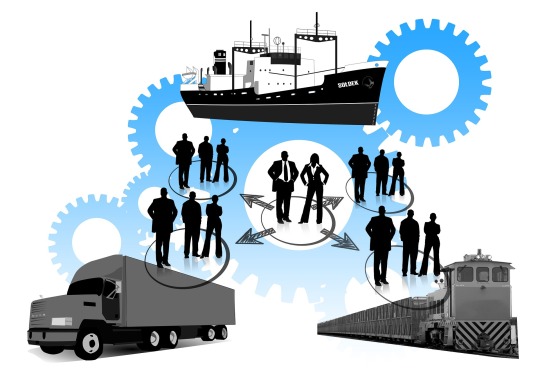
Despite its rapid growth, the e-commerce sector in India faced several challenges. These included:
Changes in Consumer Dynamics
The changing demographics and increasing disposable incomes contributed to the growth of e-commerce. Additionally, the convenience of shopping from home, access to a vast array of products, and the availability of reviews and ratings influenced consumer preferences. Social media also played a role in shaping purchasing decisions, as consumers often relied on peer recommendations and influencer endorsements.
Logistics and Infrastructure
Logistical challenges posed a significant hurdle for e-commerce companies. However, innovative solutions emerged, including third-party logistics providers and technology-driven solutions for efficient last-mile delivery. Companies started investing in warehouses and fulfillment centers to ensure faster and reliable delivery of products.
The Rise of M-commerce and Digital Payments
Mobile commerce (m-commerce) gained immense traction as smartphones became more affordable and accessible. Digital payment solutions, such as mobile wallets and UPI (Unified Payments Interface), revolutionized the way transactions were conducted. This shift towards digital payments not only enhanced the shopping experience but also facilitated the growth of online transactions.
Counterfeit Products and Trust
The prevalence of counterfeit products on online platforms raised concerns among consumers about product authenticity and quality.
Data Privacy and Security
As online transactions increased, ensuring the security and privacy of customer data became crucial to building trust in the e-commerce ecosystem.
Competition and Profitability
Intense competition led to price wars and heavy discounts, making it challenging for e-commerce platforms to achieve profitability. Additionally, maintaining customer loyalty in a crowded market became an ongoing concern.
Innovations and Technologies in E-commerce Business

Artificial intelligence (AI), machine learning (ML), and data analytics play a crucial role in enhancing customer experiences. Personalized recommendations, virtual trial rooms for fashion, and chatbots for customer support became common features. Delivery mechanisms evolved with the experimentation of drones and autonomous vehicles.
Impact on Traditional Retail
The rise of e-commerce brought about a paradigm shift in consumer behavior. Traditional brick-and-mortar retailers faced challenges as consumers gravitated towards the convenience and variety offered by online platforms. Many retailers adapted by establishing their online presence, embracing an omnichannel approach.
Challenges and Future Outlook
While the journey of e-commerce business in India has been transformative, several challenges persist. These include intense competition, profitability concerns, regulatory complexities, and the need to establish sustainable business models. However, the future outlook remains promising. The growth of Tier 2 and Tier 3 cities, advancements in technologies like AI and AR, and the push towards digitization by the government all point towards a bright future for e-commerce in India.
In response to these challenges, e-commerce companies adopted innovative strategies. They focused on enhancing customer experience, expanding product categories, investing in technology-driven solutions, and collaborating with traditional retailers to create omnichannel experiences.
The future of e-commerce business in India appears promising, driven by factors such as increasing internet penetration, digital literacy, and the growing acceptance of online transactions. The rise of direct-to-consumer (DTC) brands, the integration of augmented reality (AR) for immersive shopping experiences, and the expansion of rural markets are expected trends.
Impact of COVID-19 on e-Commerce Business

The COVID-19 pandemic acted as a catalyst for the e-commerce business in India. Lockdowns and movement restrictions led to a surge in online shopping, as consumers turned to e-commerce platforms for their essential and non-essential needs. This period highlighted the resilience of the e-commerce ecosystem and the industry’s ability to adapt to challenging circumstances.
Conclusion – E-commerce Business
The journey of e-commerce business in India has been a transformative odyssey, marked by remarkable growth, innovation, and challenges. From its modest beginnings in the late 1990s to becoming a thriving ecosystem that impacts millions of lives. E-commerce has redefined the retail landscape. As India continues to embrace digital transformation and connectivity. The e-commerce sector is poised to reshape commerce, consumption, and economic opportunities for years to come. However, realizing this potential will require a concerted effort from stakeholders. This also includes businesses, government bodies, technology providers, and consumers, to address challenges and unlock the full promise of e-commerce in India’s dynamic economy.
The evolution of e-commerce business in India is a testament to the power of technology, innovation, and adaptability. From its humble beginnings as online directories to becoming a multi-billion-dollar industry. The journey of e-commerce in India has been marked by perseverance, creativity, and resilience. As technology continues to evolve and consumer behaviors shift. E-commerce is poised to play an even more integral role in shaping the Indian retail landscape.
Digital Marketing Services , SEO and E-Commerce Solutions in Delhi, India
Author – Farhanul Haque
This article is written by the Founder of Digitamizer who has been working in the e-Commerce Sector Since 2006 and is also a certified Digital Marketing Professional from IIT, Delhi, India.
0 notes
Text
Internet Ethics: Navigating the Moral Challenges of the Digital Age

Introduction – Internet Ethics
The digital age has brought about unheard-of opportunities and demanding situations, reshaping the way we communicate, paint, and stay. The internet has revolutionized the world, connecting human beings across the globe and democratizing get right of entry to information. However, this digital revolution has also given upward push to a host of ethical dilemmas and morally demanding situations that call for our attention and attention. In this essay, we can discover the multifaceted panorama of internet ethics, inspecting troubles including privateness, online harassment, misinformation, and the position of generation businesses. We will even talk about the importance of ethics in shaping the digital future and advise strategies for navigating the ethical complexities of the virtual age.
Privacy within the Digital Age and Internet Ethics

Is Your Privacy at Risk in the Digital Age?
Privacy is an essential human right, but in the virtual age, it is continuously underneath hazard. The internet has enabled the gathering, garaging, and evaluation of enormous amounts of private records, regularly without the expertise or consent of individuals. Several key privacy-demanding situations need to be addressed:
Data Collection and Surveillance -Internet Ethics
Governments and corporations robotically accumulate information on individuals’ online sports, main to worries about mass surveillance and the erosion of privacy. Therevelations of Edward Snowden in 2013 exposed the volume of government surveillance packages, leading to an international debate on the balance between protection and privacy.
Data Breaches and Hacking -Internet Ethics
Cyberattacks and record breaches have become common, setting personal information at risk. Companies need to take more obligation to protect consumer information and directly notify affected people when breaches occur.
Social Media and Personal Information -Internet Ethics
Social media structures have turned out to be hubs for sharing private records. Users frequently unwittingly expose themselves to privacy dangers with the aid of sharing sensitive information without absolutely understanding the consequences.
Algorithmic Profiling – Internet Ethics
Algorithms utilized by tech companies can create precise profiles of individuals primarily based on their online conduct. These profiles may be used for focused advertising, but additionally, they increase worries about manipulation and discrimination.
To deal with these privateness demanding situations, we need complete law and international agreements that guard individuals’ statistics rights, make sure transparency in information practices, and maintain corporations answerable for facts breaches. Furthermore, people must take a proactive role in expertise their digital footprint and making informed choices approximately the data they proportion online.
Online Harassment and Cyberbullying – Internet Ethics

Online Harassment: How Can We Create a Safer Digital Space?
The anonymity and distance furnished by using the net have given rise to a demanding fashion of online harassment and cyberbullying. These behaviors could have extreme mental and emotional outcomes for victims. To fight online harassment, we must recollect the subsequent elements:
Anonymity vs. Accountability – Internet Ethics
Anonymity can be a double-edged sword, permitting free speech and privateness while additionally imparting cover for online harassers. Striking stability between retaining anonymity and conserving people chargeable for harmful moves is essential.
Legal Frameworks – Internet Ethics
Legal structures must adapt to the digital age by using supplying powerful manner to deal with online harassment. This includes clean definitions of cyberbullying, streamlined reporting mechanisms, and swift enforcement of outcomes for perpetrators.
Platform Responsibility – Internet Ethics
Social media systems and websites play a large position in moderating content and addressing harassment. They must establish clear guidelines and put money into AI-driven tools to discover and mitigate dangerous behavior.
Digital Literacy and Education – Internet Ethics
Promoting digital literacy and instructing customers approximately online behavior is critical in preventing cyberbullying. Individuals should be privy to the impact of their words and move online.
Internet Ethics: Misinformation and Disinformation

The proliferation of incorrect information and disinformation on the net poses a sizable chance to society. Misinformation refers to fake or deceptive information unfolding without harmful motive, whilst disinformation entails the planned spread of false information to misinform or control. Addressing this assignment requires a multifaceted method:
Media Literacy
Promoting media literacy is critical to help individuals significantly compare facts assets and distinguish between reliable and unreliable content material.
Fact-Checking
Fact-checking agencies play an essential role in debunking fake claims and verifying information. Governments and tech groups should aid and collaborate with these companies.
Algorithmic Responsibility
Tech businesses need to take responsibility for the algorithms that pressure content hints. Algorithms must prioritize accuracy and variety of sources over sensationalism and engagement.
Regulation
Governments must remember guidelines that require transparency in online advertising marketing and content merchandising. Additionally, the criminal effects of the deliberate spread of disinformation must be explored.
Internet Ethics and Tech Company Accountability

Technology groups wield big power in shaping the digital landscape. As gatekeepers of information and conversation structures, they must be held responsible for their movements and decisions. Key troubles associated with tech organization duty encompass:
Content Moderation
Tech groups face the undertaking of moderating content material on their structures whilst respecting free speech. Striking the right stability is hard, but it’s miles crucial to fight hate speech, extremism, and dangerous content.
Monopoly and Competition
Some tech giants have achieved near-monopoly reputations of their respective domains, which could stifle opposition and innovation. Antitrust measures and rules may be necessary to make certain a stage playing field.
Ethical Use of AI
As artificial intelligence will become increasingly incorporated into tech merchandise, it is essential to make sure that AI structures are evolved and used ethically. This consists of addressing biases in AI algorithms and ensuring transparency in AI decision-making.
Data Handling
Tech businesses should be obvious approximately their facts coping with practices and be answerable for breaches or misuse of personal information. Privacy rules like GDPR in Europe set essential requirements in this regard.
The Role of Internet Ethics in Shaping the Digital Future
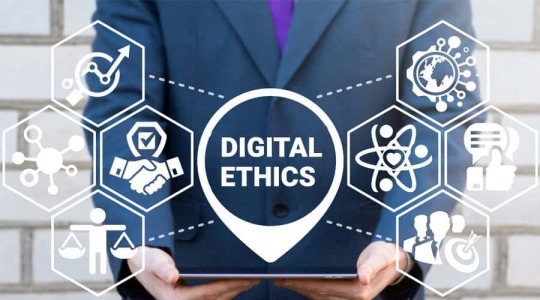
Ethics ought to play an important function in shaping the digital future. As we navigate the ethical challenges of the digital age, numerous principles and techniques can guide us:
Human-Centered Design
Technology needs to prioritize the well-being and rights of individuals. Designing with empathy and consideration for numerous person needs can result in greater ethical effects.
Transparency
Tech groups must be obvious approximately their data practices, content moderation, and algorithmic choice-making. Transparency builds agreement and accountability.
Multistakeholder Collaboration
Governments, tech organizations, civil society, and academia must collaborate to increase ethical tips, standards, and guidelines that deal with the complex demanding situations of the digital age.
Continuous Ethical Evaluation
Ethical issues must be an ongoing part of the improvement and deployment of technology. Ethical audits and effect assessments can assist in identifying and mitigating capability harms.
Digital Citizenship
Promoting digital citizenship approach instructing people approximately their rights and obligations inside the virtual realm. It empowers people to make informed picks and interact in ethical online conduct.
Conclusion
The virtual age has delivered us unprecedented connectivity and get right of entry to statistics; however, it has additionally presented us with a bunch of moral challenges. Privacy, online harassment, incorrect information, and tech corporation responsibility are only a few of the complex problems we ought to navigate. Addressing those challenges requires a multifaceted method that involves governments, tech businesses, civil society, and individuals.
Ethics must be at the forefront of our decision-making in the digital age. We ought to prioritize the protection of privacy, the prevention of online harassment, and the combat of incorrect information. Tech agencies ought to act responsibly, and governments ought to enact policies that strike the proper balance between innovation and accountability.
Ultimately, our collective commitment to moral ideas will shape the digital future. By fostering a way of life of virtual citizenship, transparency, and collaboration, we can harness the transformative strength of generation even as we uphold the values and rights that outline our society.
Digital Marketing Services , SEO and E-Commerce Solutions in Delhi, India
Author – Farhanul Haque
This article is written by the Founder of Digitamizer who has been working in the e-Commerce Sector Since 2006 and is also a certified Digital Marketing Professional from IIT, Delhi, India.
#digital marketing in delhi#digital marketing in India#seo services#sem services#social media marketing
0 notes
Text
FLIPKART – An e-commerce giant success story

Flipkart, the Indian e-commerce giant, has started on a rollercoaster journey with notable ups since it was founded. Sachin Bansal and Binny Bansal founded Flipkart in 2007. This company was started in a small apartment in Bengaluru to provide online books to retail customers. Both founders personally delivered books to customers in the beginning days and ensured the best service was provided to customers.
This grassroots approach and relentless focus on customer satisfaction established the foundation for success. Bansal duo identified the potential of e-commerce in India and they started working on it. Their initial focus was booking and later they expanded to more categories with a wide range of products like electronics, fashions, and many more.
Early days of Flipkart
The early days were challenging with limited infrastructure and logistics hurdles. However, their approach led to the growth of the company. It was a time when a lot of people were looking to purchase items but they did not want to use credit or debit cards as well as net banking. They started cash on delivery and it was a game changer. So, the hesitation to purchase online is no more and customers adopted this method and started purchasing the products from the website.
E-Commerce in India
Since India was new in e-commerce there were only two to three companies who were selling products online and were popular. Ebay, Rediff, and Indiatimes were popular companies at that time. However, they have had a very small number of buyers since the payment trust issue, but the cash-on-delivery (COD) payment mode was a stroke of genius to win the trust of the Indian people.
Payment method Introduction
The early days were challenging, with limited infrastructure and logistical hurdles. However, the Bansals’ persistence and customer-centric approach led to steady growth. The introduction of Cash on Delivery (COD) as a payment option was a game-changer, overcoming the hesitations of Indian customers to adopt online shopping due to trust issues related to online payments.
(The year 2011-2014)
Funding from Investors
They got a substantial amount of funding from Venture Capitals in 2011 and invested in technology, logistics, and marketing making Flipkart one of the leading e-commerce companies in India. However, in this period they received criticism as well from different mediums as they were providing very many discounts and attracting customers to purchase items online. The acquisition of Myntra, a leading online portal of Fashions made their position stronger. The emergence of Amazon in the Indian market was a very big challenge for the organization. However, it responded to the competition in the way of making customer service and delivery better and diversifying its product offerings.
Introduction E-Kart

Since they started getting funds from global investors, like Accel Partner and Tiger Global Management. The infusion of capital enabled the company to scale operations, invest in technology, and launch its own logistics arm, eKart. Flipkart’s aggressive marketing campaigns and enticing discounts captured the attention of millions of Indian consumers, propelling it to the forefront of the e-commerce industry.
Big Billion Day Sale

Flipkart started its biggest sale of the year named Big Billion Day and they are achieving the target of sales of 1 billion in that particular sale time frame. They started informing sellers in August about the inventory pricing and manpower. So, that no order can be delayed and every order is fulfilled on time. Every other e-commerce company is following the same trend.
However, every seller is getting a good profit during that sale period. The festive season of India normally starts in October till November or the end of the year. Please take a look at the offers Flipkart gave on the first Big Billion Day in 2014. There was also news that they hit $100 million in sales in only 10 hours.
There are also a lot of records of sales made on these days. Sometimes, they get orders more than the capacity to fulfill so they block some categories for some areas and some sellers as well.
https://stories.flipkart.com/the-big-billion-days-2022-news-updates/
Some very interesting facts are that since it was a very new concept and everyone was trying to understand the pattern of sales including offline (store) sellers. Ebay India got the highest sales of the year on the same day whereas they had no sales. Since Amazon was new in India they were trying to understand the sale pattern of India. However, first, they took out ads mocking Flipkart and named it a contemporary war of cola and soap.
Amazon and Snapdeal Stand on Big Billion Days
In the same period Snapdeal ran a sale with the tagline “For others it’s a big day. For us, today is no different.” Snapdeal got the highest sales in the same period on Monday and it was almost out of capacity to fulfill.
Amazon also ran a sale on 4-6 October calling it The Mission to Mars Weekend. They tried to follow every step of Flipkart to make themselves established in India and they did and became the major competitor. Amazon never advertised in any other country apart from India.
There was a very interesting story that at the time Big Billion Day Sale, Jeff Bezos, Founder and CEO of Amazon was on an India visit and he saw only the big banners and hoardings of Flipkart from the airport to his office. He decided to advertise in India and be a clear competitor of Flipkart or try to be bigger than Flipkart. As a result, Amazon invested a lot of money in advertisements in India to establish itself as an e-commerce marketplace.
Exclusive sale of Products
There were a lot of changes in business methods after the 2008 recession and Motorola was one of the leading mobile companies before the recession. But, as the trend changed, they could not find a better place in the market and they made a deal with Flipkart to sell the phone exclusively on their website. It was a huge success and they sold a lot of devices. Later on, Flipkart the exclusive deals of MI, Redmi, and so on.
Brand Value of Flipkart
The valuation of Flipkart touched $15 billion at its peak. The organization expanded itself regularly. They launched “Flipkart First” (a subscription-based loyalty program) and invested in artificial intelligence and machine learning. In 2016, the company reviewed the challenges of amid growth as there were some changes in regulations regarding foreign direct investment (FDI) in the e-commerce business model, which led Flipkart to restructure its marketplace.
Entry of Walmart and Exit of eBay

Flipkart got ownership of eBay India in a deal with parent company eBay.com in 2017 and they got one bigger name which was one of the market leaders in e-commerce. But in 2018, global retail giant Walmart acquired most of the shares approx. 77% for $16 Billion. This move was seen as a good and strategic step to counter the influence of Amazon in India.
When there is an acquisition there will be leadership changes and the same happened with Flipkart. Binny Bansal, co-founder of Flipkart stepped down amid allegations of personal misconduct. There was one more big impact of the Flipkart-Walmart deal was the closure of eBay India. Since Walmart got the maximum share they can not allow their competitor brand with their organization. So, Flipkart closed eBay operations in India.
Flipkart’s acquisition of Phonepe, a digital payment platform was a huge success in the fintech sector. The company’s focus on technology and innovation remained intact as it sought to provide a seamless online shopping experience.
Acquisition by Flipkart
Flipkart acquired almost 22 companies and those are ANS Commerce in 2022, Yaantra in 2022, Sastasunder in 2021, Cleartrip in 2021, Scapic in 2020, Mech Mocha in 2020, Walmart India in 2020, Upstream Commerce in 2018, Liv.ai in 2018, F1 Info Solutions and Services in 2017, eBay India in 2017, Jabong in 2016, Phonepe in 2016, FX Mart in 2016, Appiterate in 2015, AdIquity in 2015, Myntra in 2014, Jeeves in 2014, Letsbuy.com in 2014, Chakpak in 2011, MIMI 360 in 2011 and weRead in 2011.
Armband of Flipkart

Flipkart has always an armband to get the benefit of the market apart from selling. In the beginning, they were selling with the partner company WS Retail on their website and started a logistic service named eKart which got a very good name in logistics services. Nowadays, Flipkart uses its brand to sell items with different names in different categories like fashion, and electronics. It is named as Flipkart Smartbuy.
Flipkart journey during the pandemic – challenges and hurdles
COVID-19 posed unforeseen challenges for all companies and the same for Flipkart disturbing the whole supply chain and also impacting consumer behavior The company quickly adopted all methods required to fulfill the orders and started fulfilling orders for essential items. Since, essential items were only allowed in the first lockdown, and very hard to deliver all the items due to the disturbance of the supply chain.
Despite its resilient response to the pandemic, Flipkart’s journey has not been free of obstacles. Regulatory hurdles, concerns about counterfeit products, and intense competition continue to shape the company’s trajectory. However, Flipkart’s collaborations with local artisans and manufacturers through initiatives like ‘Samarth’ demonstrate its commitment to inclusive growth.
Flipkart IPO Announcement
As economic activities gradually resumed after the pandemic, Flipkart announced plans for an initial public offering (IPO), indicating its ambition to enter the stock market. The IPO preparations marked a significant milestone in Flipkart’s transformation. The anticipation of Flipkart’s IPO and its post-pandemic recovery underscored the company’s determination to maintain its momentum. By diversifying its services, leveraging data analytics, and nurturing partnerships, Flipkart aimed to solidify its position in India’s burgeoning digital economy. The company’s journey continued to be shaped by the evolving dynamics of e-commerce, technological advancements, and changing consumer preferences.
Conclusion
Flipkart’s journey has been one of remarkable ups and challenging downs. As reflecting the dynamic nature of the e-commerce industry and the complexities of operating in a diverse market like India. The company’s ability to innovate, adapt, and reinvent itself has allowed it to not only survive. But also, thrive amidst fierce competition and changing landscapes. As the e-commerce sector continues to evolve, Flipkart’s journey remains an inspirational tale of resilience, innovation, and the pursuit of excellence.
Digital Marketing Services and E-Commerce Solutions in Delhi, India
Also, read the below articles:
RISE AND FALL OF AN E-COMMERCE GIANT – eBAY INDIA
Snapdeal – Story of Rise and Fall
Author – Farhanul Haque
This article is written by the Founder of Digitamizer who has been working in the e-Commerce Sector Since 2006 and is also a certified Digital Marketing Professional from IIT, Delhi, India.
0 notes
Text
Snapdeal’s Epic: Story of Rise and Fall

Snapdeal’s Epic: Story of Rise and Fall
Snapdeal, once known as one of the most trusted marketplaces, had the most dramatic rise and fall, challenges, and opportunities in the digital marketplace. From its inception till 2017, Snapdeal’s journey has been a lesson of innovation, competition, wrong decisions taken, and lessons learned.
Inception and continuous journey
Kunal Bahl and Rohit Bansal founded Snapdeal in February 2010. In the beginning, it was a daily deal platform as a coupon provider. Initially offering discounts on a wide range of products and services. Later, company officials found the scope of e-commerce business in India and they changed the website to a full-fledged online marketplace.
Early days and funding
Since the company started in the days when people started using smartphones and the internet, it has seen exponential growth in users as well as in business. Snapdeal‘s business model was to offer products at competitive pricing. The company attracted funding from good and big investors, including Nexus Venture Partners, Kalaari Capital, and Softbank, which added substantial capital to fuel its expansion. Ratan invested. Also, other investors were Ru-Net Holdings, Premji Invest, Tybourne Capital Management, Temasek Holdings, Blackrock, eBay, Saama Capital, Intel Capital, Ontario Teachers’ pension account, Singapore-based investment entity. Brother, Alibaba Group, Foxconn Technology Group, Bessemer Indo US Ventures, Fortune Apparel
Story of Success
When Snapdeal was busy building too many warehouses they never worked on their USP in categories like Flipkart had fashion and electronics and Amazon had pantry and prime. By 2014, Snapdeal had a significant number of customers and a market share, and in March 2015, their total market share was 24% and September 2015 was the peak when they had a market share of 25%’. , Snapdeal has had the highest number of warehouses to Amazon and Flipkart.
Acquisition and Ventures
Snapdeal bought many companies but most of them failed. They bought Exlusively.com earlier but it shut down in a year. Also, they were in talks to acquire fashion marketplace VOONIK and e-commerce marketplace Zapyle but failed after some stages of discussions. The company acquired companies like Reducedata, RupeePower, Doozton, TargetingMantra, Reduce Data, Fashiate, MartMobi Technologies, RupeePower, Exclusively, Wishpicker, Doozton, Shopo, eSportsBuydotcom, Grabbondotcom. that did not give any fruitful result.
They bought GOJAVAS but failed to utilize it and finally sold it to Pigeon Express despite a 20 million investment in GOJAVAS. Another acquisition was FREECHARGE, which acquired 350 million and, for that, was a competitor of PAYTM but did not capitalize and, due to a loss, Snapdeal sold it to AXIS BANK for 80 million. Freecharge could be a game changer if it was done during demonetization but did not attract more customers and it was a loss deal.
Another big acquisition was Unicommerce, which was an e-commerce-enabled software used to manage warehouses and inventory. This platform was very popular with sellers who used to sell on marketplaces. Snapdeal acquired this company in 2015 in undisclosed amount. However, the company did not get fruitful results after the acquisition. Their tie-ups with redBus, ClearTrip, Urban Clap, which is now known as Urban Company, and Zomato for their respective services failed to make any impact.
Strategic Mistakes
Inhouse Seller or Armband Seller
Every big company in e-commerce had its seller, like Flipkart had WS Retail and Amazon had Cloudtail and they were getting the maximum sales of their website from these sellers, whereas Snapdeal did not have any.
Omni Channel Failure
It could be a game-changer but didn’t happen. In this process, customers can order a product and pick up the order in 2 hours from any store and the offer is not available in cash on delivery. Tata Cliq had the same practice. Initially, Omni Channel started in 70 cities.
No Grocery and Furniture Category
The furniture and the grocery category was one of the big revenue generators of the e-commerce marketplace. In 2016, total sales of these categories were $25 Billion and $ 250 million sold online, whereas in 2020, $35 Billion was total sales and $750 million online. It was indicates that these two categories are getting a significant share in online sales. Snapdeal did not have either of these.
Value Added Service
Like Amazon, Amazon Prime gives benefits to shipping and delivering the order the next day in 499 rupees. In 2015 it said one in every three orders is a prime order. They also offer other benefits, like Amazon Prime Video. Snapdeal launched Snapdeal Gold and they started delivery on the next day delivery and also gave customers 14 days return time instead of 7 days, but at the end of the year, they got only 20% of orders, which was from Snapdeal Gold. Customers wanted more apart from shipping, which they did not have to offer, like Amazon Prime video.
Customer Version on Snapdeal
A lot of customers started claiming that they were receiving the wrong item, counterfeit items. Customers were receiving the items after the promised delivery day. There were a lot of complaints about late delivery and package mishandling. Some customers received bricks instead of phones, However, brick delivery happens with other websites too.
So, the latter one was instructions from the courier company if the package value is higher to ask the customer to open the package in front of the courier guy, and if there is any issue then can be addressed at the same time. Customers started moving to other marketplaces after September 2015 and Snapdeal started losing its business. They wanted to give a discounted product instead of having a loyal customer base. They never focused on it.
Boycott Snapdeal
It happened twice by some groups and many customers uninstalled the Snapdeal app and rated 1 or 2 on the Google Play store. The first time, it happened due to a statement by Amir Khan who was the brand ambassador for this company, and 2nd time there was some issue with Snapchat but it was communicated that Snapdeal had done this. If a company’s graph is going down, then a couple of factors about losing customers can be a lot and the same happens with this company.
Seller Version on Snapdeal
Sellers Basic Issue
I was also one of the sellers of Snapdeal and I have seen it very closely and know the views of a lot of sellers. Seller support of Snapdeal was not good and it even seems they do not keep the follow-up if you contact them regarding the issue. Every day they had technical problems with their panel and it was not easy to process the order on time.
They started increasing the commission on the items and there was a time when they were charged 2.5 times in comparison to other marketplaces. A lot of fraudulent orders started coming to the panel and the seller was supposed to pay for the shipping of those orders. We were getting a lot of COD returns. However, these were the general issues.
Account manager for the seller
Every account had an account manager who was visiting the premises of the sellers from time to time. But their only interest was to sell loans and advertisements. Most of the salespeople wanted to increase their business in an organic way but they wanted to get a part of the sale in terms of advertising for sale.
Big Strategic Mistake
Snapdeal started a process where every person has to send their products to a warehouse and all the orders will be fulfilled from there. Unlike Amazon, where you have the right to choose the product you would like to send to a fulfillment center and you can even do additional listing on Amazon as fulfilled by a seller. But this option was not available in Snapdeal.
They said that a seller can ship a maximum of 5 orders from their premises. When sellers sent their products to warehouses, some were lying for weeks and sellers started complaining about it but the issue was not resolved. Later on, Snapdeal asked sellers to get the items from a warehouse. When they went to pick up, they found that a lot of items were missing and this was done by the warehouse team members. A lot of complaints were about it but nothing happened.
In this whole scenario, Snapdeal was the only loser. They restricted the order to 5 and the buyer wanted the item and when they tried to purchase the item, it showed out of stock. So, they purchased from other marketplaces. So, the only loser was the policymaker.
Order Fulfilment Issue
During the sale, their fulfillment capacity, once finished, blocks the order from customers and does not take any more orders. However, small and medium sellers were at a loss as they were getting hardly any orders due to fulfillment capacity, whereas they also spent some amount on inventory and warehouses. On the other hand, some sellers were receiving orders on other marketplaces. So, they almost lost their trust in the company in return on investment. So, they started working with other marketplaces.
CEO and Management Decisions
Another big setback for the company was the leaving of Nikesh Arora from Soft Bank. He was president of Soft Bank.
Snapdeal Merger with Flipkart
Sanpdeal was the only Unicorn e-commerce company that crossed first the market value of $1 Billion. In the middle of 2015, it reached $6.5 Billion. However, due to their internal policy and customer dissatisfaction, they started losing their business. Their customer share decreased from 25% to 4%. Flipkart tried to acquire Snapdeal and it was almost done. However, due to big opposition from investors, it did not happen.
Snapdeal 2.0
Since the merger did not happen with Flipkart, then the company started once again. It was called Snapdeal 2.0. However, as per their claim, they minimized some losses and gained new customers. But, the same number of customers did not start purchasing from Snapdeal. In the new system, they remove badly rated sellers and give benefits to good well-rated sellers. Their other policy is to involve manufacturers and ship the order directly from manufacturer to customer. We call it M2C(Manufacturer to Customer).
It was claimed that revenue from operations increased by 85% and traffic increased by 100%. Where 80-90% of orders are being received from non-metro locations. The company added 6 million new customers during the lockdown and 20K more sellers were added during that lockdown time.
Snapdeal aims to achieve profitability within the next quarter, as it bets heavily on the value customer base to drive growth, according to Himanshu Chakrawarti, CEO, Snapdeal Marketplace.
We are hoping that the company can do best in this sector. However, it is very hard to regain customers and build trust again.
Digital Marketing Services and E-Commerce Solutions in Delhi, India.
Also, read the below articles:
RISE AND FALL OF AN E-COMMERCE GIANT – eBAY INDIA
Flipkart – An online bookseller to one of the largest marketplaces
E-Commerce: The Internet’s Retail Revolution
The Social Media Revolution: From MySpace to TikTok
Online Marketplaces – Unleashing the Power of Digital Marketing Influence
Digital Marketing Services, SEO and E-Commerce Solutions in Delhi, India
Author – Farhanul Haque
This article is written by the Founder of Digitamizer who has been working in the e-Commerce Sector Since 2006 and is also a certified Digital Marketing Professional from IIT, Delhi, India.
0 notes
Text
eBay India : The Pinnacle and Plummet of a Marketplace Titan

Why did eBay India encounter setbacks? Know the top reasons for eBay’s failure in India
Brief Introduction of eBay.com – From Auctionweb to eBay.com
eBay.com, one of the largest and most popular marketplaces, was founded in September 1985 by Pierre Omidyar and named “Auctionweb”. The platform started a way for individuals to buy and sell collectible items. But they very soon added more categories to their list. Over the years, eBay has gone through numerous transformations faced many challenges, and adapted to the marketing dynamics. The first item ever sold on the platform was a broken laser pointer, which fetched an unexpectedly high price. Ebay India was India’s division which was the early days online marketplace in India.
AuctionWeb – Introduction
Auctionweb was a personal project of Pierre Omidyar to buy and sell items at auction in an online format. The company changed its name to eBay officially in 1997. EBay’s name was derived from Pierre Omidyar‘s consulting firm name “echo-bay”. In the year 1998, eBay introduced its first logo. EBay went to the public to raise capital and establish themselves in the mainstream business world. The initial public offering (IPO) was a resounding success, contributing to the rapid growth of the platform. As eBay’s reach extended globally, it acquired international marketplaces. Such as the acquisition of iBazar in 2001, strengthening their position in Europe.
In 2002, eBay made a good strategic acquisition by purchasing PayPal. A move that made the future of online payments in a smooth shape. The integration of PayPal into the eBay platform streamlines transactions and increases user trust. The synergy between eBay and PayPal led to substantial growth in both entities.
eBay – Continuous Journey
The company continuously innovated to enhance the user experience. The introduction of the “Buy It Now” feature in the year 2000 allowed sellers to list items at fixed prices. It allowed the buyer to purchase the item immediately. The introduction of eBay stores in the year 2001 provided sellers with personalized virtual storefronts, enhancing their visibility and branding.
As the organization solidifies its position as a leading online marketplace, it also faces challenges. The emergence of competitors like Amazon and the proliferation of counterfeit goods on the platform posed threats. eBay responded by implementing more stringent quality control, buyer protection programs, and enhanced seller performance standards.
eBay embraced the mobile revolution, launching its mobile app in 2008. The app empowered users to browse, bid, and sell the items on the go, changing the way people engaged with the platform. This marked the beginning of eBay’s digital transformation journey, which included user interface enhancements, personalized recommendations, and AI-driven search algorithms.
INTRODUCTION OF EBAY INDIA
eBay India, an e-commerce giant, entered India by acquiring Bazee.com for $50 million in 2004 and started selling products on its portal. This move was very strategic as they got a very big customer base in an emerging market as internet users were small in numbers and getting up day by day and this online business started becoming popular. Being an early mover, they have a large customer base with fewer competitors. At that time, there were several methods for buying a product online and one of the popular options was auction.
A buyer can bid according to the auction base price and can get the products at the lowest price. If there is no bidder or fewer bidders, the price does not go up. This was a unique and interesting way to buy antique products, like postal stamps and coins and some antique items. I used to purchase items that I could not find on the market easily.
Continuous Journey – Ebay India
However, they offer collectibles, handicrafts, fashions, and electronics. Some other popular portals like Rediff.com and Indiatimes.com were the competitors of eBay India. Some of the sellers, mainly from the electronic electronics category, were used to selling items on eBay India at that time, as this was the peak of businesses who were selling mobile phone accessories and getting more business from this website, Smartphones were introduced and started being sold in India and buyers started buying accessories for their phones.
The platform was user-friendly and methods were very secure. However, not every credit or debit card holder wants to purchase online. This was one of the bigger challenges. In 2014, eBay introduced a cash-on-delivery payment mode. Before 2014, only a prepaid method was available to purchase the item. It was a C2C portal and encouraged consumers to sell their products on the website. To sell on a website, it is not necessary to have a registered business. An individual can sell products to consumers.
CONTINUOUS JOURNEY AND STRATEGIC MISTAKES – EBAY INDIA
I started my journey with e-commerce companies in 2006 and work for a mobile phone accessories business company. So, I have seen the ups and downs of e-commerce websites very closely as I have been in this business for a long time. Other players like Flipkart started in 2007 but they were selling books and later moved to other categories, somewhere in 2010, and converted their website in 2011. Other marketplaces like Snapdeal in 2010 and Amazon in 2013 slowed the business of the company, but they did not stop getting good business.
New companies like Flipkart and Amazon invested heavily in marketing, logistics, and technology to get a good share of online customers. However, eBay India did not work on logistics and marketing and once other companies came up with their USP of guaranteed delivery, eBay had nothing to offer. So, in the name of guaranteed delivery and other discounts, they started losing business in a couple of years and somehow lost their customer base.
Cyber Attack on eBay India in 2014
eBay started losing its grip in 2014 when one morning it was news that eBay is a victim of a cyber-attack and its eBay corporate network is hacked and databases of users. were compromised and eBay.com lost 1.73% share price on the same day due to this news. Later, they notified each customer and asked them to change their password. However, the news flashed in May but this happened in late February to March.
EBay spokeswoman Amanda Miller told Reuters late on Wednesday that those passwords were encrypted and that the company had no reason to believe the hackers had broken the code that scrambled them. “There is no evidence of impact on any eBay customers,” Miller said. “We don’t know that they decrypted the passwords because it would not be easy to do.” She said the hackers gained access to 145 million records of which they copied “a lar
ge part”. Those records contained passwords as well as email addresses, birth dates, mailing addresses and other personal information, but not financial data such as credit card numbers.
Miller also said the company has hired FireEye’s Mandiant forensics division to help investigate the matter. Mandiant is known for publishing a February 2013 report that described what it said was a Shanghai-based hacking group linked to the Peoples Liberation Army.
Payment Modes – eBay India
eBay India implemented Cash on Delivery but very late because, in the beginning, consumers did not feel much confidence in buying products online as they had a lot of fraud with their cards and banks due to less awareness. However, they had a payment guarantee mechanism named PAISAPAY. eBay introduced its global model to the Indian market. It introduced features like Cash on Delivery (COD) and offered localized services to cater to Indian shoppers’ preferences. However, these efforts were not always sufficient to compete with the deep pockets and extensive infrastructure investments of its rivals.
Indian consumers were increasingly looking for a smooth shopping experience, a wide variety of products, and reliable customer service. eBay’s auction-based selling model, a unique selling method, might not have aligned with the changing preferences of Indian shoppers who sought convenience and assurance in their online purchases.
STRATEGIC PARTNERSHIP of EBAY INDIA WITH FLIPKART AND END OF JOURNEY
In 2017, eBay India entered a strategic partnership with Flipkart, a major Indian e-commerce player. They invested in Flipkart and integrated its marketplace into Flipkart’s platform. While this move reflected a shift in eBay’s strategy, it could also be seen as an acknowledgment of the challenges eBay India faced in maintaining its independent presence.
As a result of the partnership with Flipkart, eBay India’s dedicated marketplace was shut down in 2018. The company chose to focus on its investment in Flipkart and step back from operating a standalone platform in India. This marked the official end of eBay India’s journey as a distinct online marketplace.
In conclusion, eBay India’s downfall can be attributed to a combination of factors such as intense competition, challenges in local adaptation, logistical limitations, changing consumer preferences, lack of focused investments, and strategic decisions. The dynamic and rapidly evolving nature of the Indian e-commerce market, coupled with the unique demands of Indian consumers, poses significant challenges for eBay India’s sustainable growth. The partnership with Flipkart and the subsequent closure of the dedicated marketplace can be seen as a strategic move to reallocate resources and pivot in response to these challenges.
Views of experts on the merger and shutdown of eBay India
Flipkart CEO Kalyan Krishnamurthy in an email to his employees stated that the company will launch a new platform for refurbished goods, immediately succeeding the termination of all customer transactions on eBay.in. “Based on our learning at eBay.in, we have built a brand-new value platform launching with refurbished goods – a large market which is predominantly unorganised… As part of this launch, we will be stopping all customer transactions on eBay.in on 14th August 2018 and transitioning to the new platform,” wrote Krishnamurthy in the mail.
Flipkart-eBay India merger was announced in August 2017 when the Indian e-commerce company had raised USD 1.4 billion from global technology majors such as eBay, Microsoft, and Tencent. eBay announced the end of the strategic partnership in May,2018, stating that it will relaunch eBay India with a different method to focus on cross-border trade.
Suresh Reddy, Chairman and CEO, Brightcom, said, “With Walmart coming in, this was an inevitable outcome. eBay had to be out. It was a clear case of conflict of interests.”
Brand expert N Chandramouli, CEO, TRA Research, believes that eBay will most likely come back. “This shut down is only a change in position, which was necessary after the Walmart deal. It must have been a part of the deal structure. eBay is likely to restart soon in a non-competitive space with Flipkart.” Commenting on the refurbished market, he said, “India is a value conscious market and the refurbished goods segment has been functioning in an informal way for ages now. However, if Flipkart is entering this marketplace, it needs to be very careful about the promise versus the delivery. If they are able to build trust, they can enjoy success. Else, the business will collapse.”
Talking about what went wrong with eBay, Ashish Tiwari, Head- Digital Marketing, Hero Motors Company, said, “Hyper growth market requires investment and focus, which eBay lost somewhere on the way. For Flipkart, it did not make sense to continue with the investment required to keep it alive. It was eminent that Flipkart was only waiting for users to migrate from eBay to its own platform before they called it quits.” About Flipkart’s plan to enter the refurbished market, Tiwari said, “Indians have a tendency to buy fresh goods and it would take an attitudinal shift before refurbished items become acceptable.”

0 notes
Text
Digitamizer Solutions is a Delhi, India based company and a leading e-commerce and digital marketing service. We have revolutionized the online business landscape since its establishment. Our comprehensive solutions are tailored to meet our client's unique needs and objectives with a vision to empower businesses and individuals to thrive in the digital realm.
1 note
·
View note